

Voyage Charter vs Time Charter
Ships, boats and other recreational vessels are owned by a large number of individuals who often purchase them as assets. They do not use these vessels for shipping goods or for ferrying passengers.
Instead, they often lend them out to third party organizations who use them for a variety of purposes. In maritime legal terms, this lending process is known as chartering. Chartering is an important concept of the global maritime trade sector, and is of different types.
This article will delve into the differences between two specific categories of charters – the voyage charter and the time charter.

What is a Charter?
A charter is an agreement between two or more groups known as charter parties, regarding the leasing of a vessel for a fixed set of conditions. The terms and conditions stipulated in the charter are binding on all the parties in the agreement and covers a wide variety of clauses and possible scenarios that may arise. It is considered to be an official document in legal aspects and is required by Admiralty Law to be drawn up in case of any form of vessel hiring or leasing.
A shipowner is the first party in the charter agreement who owns the vessel under consideration. The charterer is an individual or organization who is in need of a ship.
The charterer may have cargo that he wishes to transport, or may further lease out the vessel to third parties.
The shipbroker is a link between ship owners and charterers, and aids in finalizing the terms of the agreement. The terms of the agreement include the duration of leasing, fees, payment instalments, regulations on usage, and detailed surveyor reports on the condition of the ship.
Payment is termed as a freight rate and is remitted to the shipowner at fixed intervals decided in the agreement.
Surveyor reports are important in chartering, as they ensure that the vessel is seaworthy prior to being chartered. Similarly, on completion of a charter agreement, and before final payment formalities, another survey report is conducted to ensure that the vessel has sustained no damage during the lease period.
The charter agreement lays down the responsibilities of each group and stipulates the condition in which the vessel is to be maintained.
There are three main types of charters – voyage charter, time charter, and demise charter.
The demise charter is often known as a bareboat charter, and grants ownership or possession of the vessel to the charterer subject to certain time-bound conditions.
Terms and Features of a Voyage Charter
A voyage charter is a type of charter in which a vessel is leased out for a particular voyage. The charter agreement lists the ports of call, destination, and restrictions on cargo, if any.
Most voyage charters are undertaken by charterers who have cargo that needs to be shipped. For this, they contact ship owners through brokers and arrange a ship for a particular voyage.
Payment of voyage charters can be done in two methods – on a per-ton basis, or on a lump-sum basis .
The per-ton basis involves paying the owner for every ton of cargo or freight transported on the vessel. This is preferred when the cargo tonnage is considerably lower than the gross maximum cargo tonnage of the vessel.
On the other hand, when a higher weight of the cargo is carried, it is advisable to pay on a lump-sum basis . The shipowner must ensure that the tonnage carried on board the vessel is within the acceptable limits of the ship. This includes checking the tonnage of on-deck cargo, and the various load lines of the vessel.
There are some important terms used in a contract agreement, that lays out the time-based rules to be followed for the duration of the contract.
Laytime refers to the time that a charterer is allowed to complete the loading and unloading process at a port of call. Since the owner pays duties and berthing charges at the port, they expect the charterer to hasten the process.
In case the charterer exceeds the laytime laid out in the contract, he is obliged to pay a penalty known as demurrage . This covers the extra costs incurred by the shipowner owing to the delay by the charterer.
On the other hand, if the ship is able to complete the loading and unloading operations before the stipulated time, the charterer can claim payment of a despatch from the owner. This is often seen as an incentive for charterers to complete the port operations as soon as possible.
In voyage chartering, the shipowner undertakes payment of fuel, operation, and employment-related costs. It is their responsibility to hire the officers and other crew members for the voyage either from a pool of individuals working for them, or using brokers as middlemen to source mariners and seafarers.
In addition, the owner must also pay costs such as berthing and loading operations. Any equipment used must also be paid for by the owners.
To recoup these costs, the owners charge a higher rate from the charterer. In general, charterers transporting a one-off consignment prefer voyage charters despite the high cost. This is because they are not tied down to the contract for a long period of time.
Simply put, a voyage charter involves a charterer hiring a vessel for the purpose of a single voyage, in which the route and ports have been pre-determined. The responsibility of duty and other payments along with recruitment is handled completely by the shipowner, while the cargo is the sole responsibility of the charterer.
Terms and Features of a Time Charter
A time charter is a time-bound agreement, as opposed to a voyage charter. The shipowner leases a vessel to a charterer for a fixed period of time, and they are free to sail to any port and transport any cargo, subject to legal regulations.
Although the charterer controls the ship, the maintenance of the vessel still falls under the purview of the owner. They are responsible for ensuring that the vessel meets internationally accepted maritime standards, throughout the course of the agreement. They regularly employ marine surveyors to prepare reports on the seaworthiness of the vessel and make repairs as and when required. The owner will face legal action in case the vessel is found to have some major problem.
The time charter agreement can span anywhere from a few days to a few years. This is a long-term agreement that works on a single rate of payment known as the freight rate.
Payment is to be remitted every quarter and does not fluctuate under ordinary circumstances.
In time chartering, the charterer is responsible for selecting a crew, paying charges that arise during the voyages, and arranging for provisions to ensure smooth operations at every port of call. They must intimate the planned route to the owners in advance. The payment is calculated on a per-day basis, with penalties added at a later time. The cost of fuel, provisions etc. are to be covered by the charterer, while the owner will handle all maintenance-related costs.
The charterer often does not sail on the vessel and provide instructions to the master of the vessel in their stead. This includes permissible cargo, route and ports, required charter speed etc.
Unlike voyage charters that use a rigid payment calculation, there are several provisions for unforeseen delays in time charters.
Since payment is on a daily basis, the charterer may be delayed for a certain reason, and these are covered in the agreement.
Time not included in the final payment is known as off-hire hours . For instance, if a vessel is slowed down because of poor weather that could not have been predicted, the extra time spent is not included in the final time count.
Similarly, if some form of damage occurs and repairs need to be carried out, the duration is considered to be off-hire . Certain clauses can be inserted in the agreement, that allows for a fixed number of off-hire hours. Beyond this, the charterer is charged for delays.
Briefly put, a time charter involves leasing a vessel for a fixed period, on a per-day rate, where the charterer is free to use the vessel. The owner only looks after maintenance-related cost.
Clauses are inserted to protect the charterer from having to pay for hours that were spent due to events that could not have been foreseen.
How to Choose a Charter Type
Voyage and time charters are very different, in their intended use and service conditions. Knowing when to choose each type of charter can go a long way in meeting expectations of the charterer and shipowner.
A voyage charter is preferred in cases where the charterer only needs the vessel for specific voyages that may arise for different reasons. This could be the case when there is an occasional cargo to transfer.
An occasional cargo commonly springs up during sudden surges in demand, when the supply services are down. Thus, companies that may deal in other commodities may enter the cargo industry for that period of time, in order to make a profit.
This can also happen when the charterer has already pressed into service their own fleet of vessels, which forces them to hire a ship from a third party so that they may undertake a single voyage.
Voyage chartering can be tricky for inexperienced charterers, since the matter of the crew and equipment must be handled correctly.
Most owners make arrangements to look after these requirements, but it is mostly based on goodwill. Having a shipbroker negotiate the terms can be very helpful in ensuring that the occasional charterer is not inconvenienced by having a ship without a crew to man it.
A time charter is more commonly used by more experienced chartering firms when there is a long-term requirement for a vessel. Instead of having to specify the ports and routes undertaken by the vessel in the charter agreement, the charterer simply hires the boat for a fixed period of time and takes complete control over the vessel in all but name.
As they are free to sail to any destination with any group of crew and officers, it is beneficial to companies that already deal in shipping. For instance, if a ship is decommissioned or is sent in for repairs, the company needs to be able to procure a vessel for the duration of that period.
Instead of having to book a ship every time they wish to undertake a voyage, they use time charters. Thus, for the duration of the agreement, they will have possession of the vessel and are free to use it, within the purview of the law. This is especially useful since such a charterer will often already have a crew ready to take over the hired vessel.
Another major factor that sways the decision to pick either a voyage or time charter is the finances of the shipping industry. Voyage chartering is considered to be a volatile market since there is no assurance of leasing a boat on completion of an existing contract. Since it is only applicable for a single voyage, the overall volatility of the voyage charter is high.
However, charterers prefer voyage charters for the reason that they can always get a more competent rate from other ship owners. In other words, the owners are at the mercy of the chartering sector.
So, most ship owners prefer time charters, as it guarantees financial returns for a fixed period of time, at a fixed rate. This offers some protection against rapid fluctuation of the chartering rates. However, charterers do not prefer this contract, as it ties them down at a single rate for an extended period.
A one-off charterer always goes for a voyage charter, while a regular charterer prefers time charters. Shipowners are often directly approached by charterers, instead of having marine brokers. Thus, one must have an overall look at various factors influencing the shipping sector, prior to choosing between a voyage and time charter.
Overall Comparison
Table of responsibilities.
You may also like to read –
- 8 Main Factors that Affect Ocean Freight Rates
- What is the Difference between Lay days and Lay time?
Disclaimer: The authors’ views expressed in this article do not necessarily reflect the views of Marine Insight. Data and charts, if used, in the article have been sourced from available information and have not been authenticated by any statutory authority. The author and Marine Insight do not claim it to be accurate nor accept any responsibility for the same. The views constitute only the opinions and do not constitute any guidelines or recommendation on any course of action to be followed by the reader.
The article or images cannot be reproduced, copied, shared or used in any form without the permission of the author and Marine Insight.
Do you have info to share with us ? Suggest a correction
Latest Maritime law Articles You Would Like :

Minimum Quantity Commitment (MQC) and Liquidated Damages in Container Shipping: Concept and Relevance

The Essential Guide to Shipping Container Dimensions – What You Need to Know

A Comprehensive Overview of IMDG Code for Shipping Dangerous Goods

Nautical Law: What is UNCLOS?

Commoditisation of Container Shipping: How Carriers Can Counter or Mitigate the Impact Thereof

The Ultimate Guide to the ISPS Code for Ships – Enhancing Maritime Security

Latest News

Subscribe To Our Newsletters
By subscribing, you agree to our Privacy Policy and may receive occasional deal communications; you can unsubscribe anytime.
Web Stories

About Author
Ajay Menon is a graduate of the Indian Institute of Technology, Kharagpur, with an integrated major in Ocean Engineering and Naval Architecture. Besides writing, he balances chess and works out tunes on his keyboard during his free time.
Great article that provides lots of fundamental knowledge! Kudos to the author, thank you!
@Edward: Glad you liked it 👍
Leave a Reply
Your email address will not be published. Required fields are marked *
Subscribe to Marine Insight Daily Newsletter
" * " indicates required fields
Marine Engineering
Marine Engine Air Compressor Marine Boiler Oily Water Separator Marine Electrical Ship Generator Ship Stabilizer
Nautical Science
Mooring Bridge Watchkeeping Ship Manoeuvring Nautical Charts Anchoring Nautical Equipment Shipboard Guidelines
Explore
Free Maritime eBooks Premium Maritime eBooks Marine Safety Financial Planning Marine Careers Maritime Law Ship Dry Dock
Shipping News Maritime Reports Videos Maritime Piracy Offshore Safety Of Life At Sea (SOLAS) MARPOL

Voyage Charter vs Time Charter – Everything You Need to Know
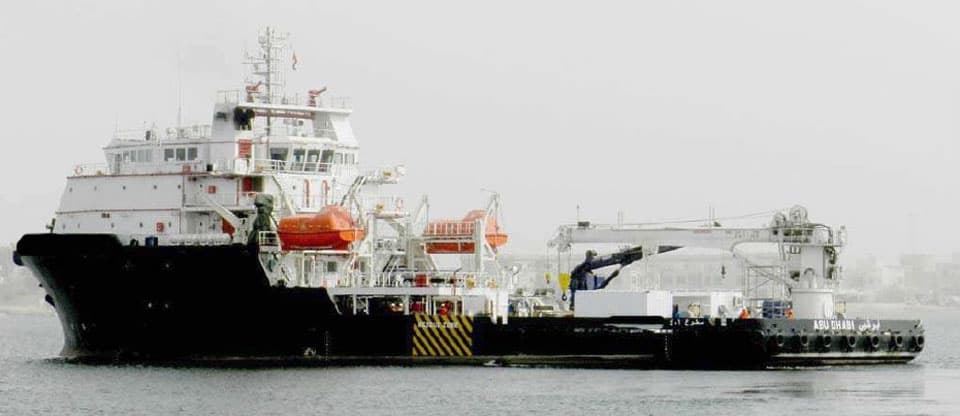
Voyage Charter vs Time Charter – Everything you need to know.
One of the biggest questions facing a charterer is whether to opt for a voyage charter or a time charter. Evaluating voyage charter vs time charter can be a complex process, but we’ve broken everything down on this page, making it easier for charterers to decide which type of vessel chartering is best for them.
1. What is a Charter? 2. What is a Voyage Charter? 3. Voyage Charter Features/Terms 4. Voyage Charter Pros & Cons 5. What is a Time Charter? 6. Time Charter Features/Terms 7. Time Charter Pros & Cons 8. How to Choose a Charter Type 9. Charter Cost 10. Ongoing Cost 11. Flexibility 12. Contract Length 13. Convenience 14. FAQs About Voyage Charter and Time Charter 15. Conclusion
What is a Charter?
A voyage charter and a time charter are two options commonly found in the chartering business. A voyage charter is when the charterer leases a vessel for a specific voyage, such as Dubai to Singapore, while a time charter is a type of lease that allows the charterer use of the vessel for a specific period of time.
As you might imagine, there are many differences between these two types of charters, and both vessel chartering options have their own pros and cons. Keep on reading this page about voyage charter vs time charter to find out which of the two options will be most suitable for your ship chartering requirements.
Voyage Charter
What is a voyage charter.
A voyage charter is a type of ship chartering that sees the charterer agree to lease the vessel for one specific voyage. So, for example, the agreement might be for the charterer to gain use of the charter ship for a journey from Dubai to Dover.
Features/Terms
As just mentioned, a voyage charter is when a charterer leases a vessel for one voyage. Before the charter contract is signed, the parties will agree on the end destination, any ports of call, and whether there will be any restrictions on cargo. Once signed, the charterer must not deviate from any of these agreements.
The terms and conditions of the charter agreement will also stipulate the laytime permitted. The laytime refers to the amount of time it takes for the vessel to be loaded and unloaded. As the ship owner pays for all costs at the port, they need this process to be as quick as possible. If the charterer exceeds the agreed time, they must pay demurrage to the ship owner. Conversely, the ship owner will usually refund some money if the loading and unloading is quicker than stipulated.
But who is responsible for what costs? Well, with a voyage charter, nearly all costs are covered by the ship owner. These include costs relating to staffing, berthing, loading, unloading, and fuel. They cover these costs by charging the charterer a fee for leasing the vessel.
The amount of money paid by the charterer can be determined in two ways. The most common way to pay is on a per-ton basis. As the name implies, this sees the charterer paying a set price for every ton of cargo they transport. This is preferred by charterers when the amount of cargo they’re transporting is significantly less than the vessel’s gross maximum cargo tonnage.
The other payment type is a lump sum – one payment that allows the charterer to transport as much cargo as they want to. It is the ship owner’s responsibility to ensure the cargo weight does not exceed the gross maximum tonnage of the vessel. This type of payment is preferred by charterers when they’re carrying a higher weight of cargo.
This type of vessel chartering is generally preferred by charterers. This is because it often has more competitive prices, plus they are not tied down to any long-term commitments.
Pros & Cons
Pro: Charterer not liable for any costs, except initial charter fee Pro: Incentives to complete port operations quickly Pro: No need to find a crew Pro: No long-term contract
Con: Lack of flexibility for charterer Con: Higher initial charter fee
Time Charter
What is a time charter.
A time charter is a type of vessel chartering that sees the charterer lease the ship for a set period of time. So, they might lease the ship for two months, during which time they have the flexibility to choose their own routes and destinations.
Before anything is signed, the ship owner and the charterer will agree the exact period of time the lease will run for. Unlike with voyage charters, the two parties will not need to agree on ports of call and destinations, as the charterer has complete discretion over this.
With a time charter, the ship owner does not cover all costs. Instead, the charterer must pay for fuel and supply costs, as well as the cost of cargo operations. However, the charterer won’t have to pay such a large charter fee, which balances things out somewhat. The owner is still required to pay for the crew and ongoing maintenance, and also must ensure the vessel meets all necessary maritime safety standards.
It is generally the case that the charterer will pay for hire in advance, on a per-day basis. Payment is not usually made in one lump sum, with the charterer instead paying the lease charge in set instalments, which are usually quarterly. It’s important to note that, should the ship be held up in unforeseen circumstances, such as inclement weather, the lost time – referred to as off-hire hours – will not usually be charged for, although if too many off-hire hours are accrued, the charterer might end up being liable.
Ship owners generally prefer their vessels to be leased on a time charter. This is because time charters guarantee income for a long period of time, giving the ship owner increased security.
Pro: Guarantees charterer access to a vessel Pro: Initial lease cost is lower Pro: More flexibility for the charterer
Con: Several ongoing costs to pay Con: Tied down to long-term contract
How to Choose a Charter Type
We’ve discussed voyage charter vs time charter above, looking at the various pros and cons of each. But which should you choose when looking to charter a ship?
Well, this really depends on your requirements. We’ve broken things down into five sections – charter cost, ongoing costs, flexibility, contract length, and convenience – and will let you know which of the ship chartering options is better for each one.
Charter Cost
When it comes to the initial cost of chartering a ship, it’s nearly always going to be cheaper to go with a time charter. This is because the ship owner will be more amenable to a lower price, as they know you’ll be hiring the vessel for longer. What’s more, you, and not the ship owner, will be expected to cover other costs, pushing the initial price down further.
So, if you’re looking for the lowest possible upfront cost, the best option is a time charter. However, remember that other costs will also need to be paid.
Ongoing cost
If you choose to take out a time charter, you will have to pay several costs, including fuel and supply costs. With voyage charters, the only significant cost payable is the initial charter – all other major expenses are covered by the ship owner.
Therefore, if you want the lowest possible ongoing costs, the clear winner is the voyage charter. However, the upfront cost will be more expensive than a time charter.
Flexibility
Those who sign up for a voyage charter are limited in their movements, as they will have already agreed a set route with the ship owners. Those who have taken a time charter have far more freedom, as they can choose where to go throughout their charter.
This clearly means that those looking for more flexibility should opt for a time charter, as there are no limitations on route, ports of call, and destinations.
Contract Length
With a time charter, you’re tied into a long contract, committing you to ongoing payments. Voyage charters, on the other hand, only last for the duration of the voyage, meaning voyage charters are generally much shorter than time charters.
This all means that those looking for the shortest contract should opt for a voyage charter. However, if you know you’ll constantly need an available vessel, the long contract of a time charter could be more suitable.
Convenience
There will be no need to hire and pay a crew when opting for either the time charter or the voyage charter. It’s only bareboat charters that require the charterer to hire and pay their own crew. However, the ongoing costs associated with time charters can be inconvenient.
Overall, voyage charters are the more convenient of the two options, as there’s no need to organise payment for such things as port costs and fuel. However, both options are generally far more convenient than a bareboat charter.
FAQs About Voyage Charter and Time Charter
What are BIMCO Sanctions Clause for Voyage Charter Parties 2020?
These are intended to help in two scenarios. Firstly, if one of the signatories of the agreement gets sanctioned, the other signatories will be able to end the contract and claim damages. Secondly, when the trade or activity is subject to or becomes subject to sanctions, the ship owners can refuse to perform their contracted duties.
What is the difference between bill of lading and charter party vs time and voyage charter?
A charter party is an agreement between charterer and ship owner to lease a ship. A bill of lading is an agreement that legally obligates the charterer to carry cargo that has been loaded aboard the ship.
A time charter is a type of vessel chartering whereby the ship owner leases the ship for a set length of time. A voyage charter is a type of vessel chartering whereby the ship owner leases the ship for the duration of a specific voyage.
What are the duties and responsibilities of the ship owner and charterer under a time charter and voyage charter party?
Under a voyage charter, the ship owner assumes almost all responsibility, including hiring and paying crew, and paying for all significant costs associated with the journey. The charterer simply has to pay the ship owner a fee to secure their vessel.
With time charters, ship owners must still hire and pay staff. However, most other significant costs associated with a voyage, such as fuel and port fees, must be paid by the charterer.
Why do ship owners prefer voyage charter over time charter?
Quite simply, they don’t. Ship owners usually prefer time charters, as they ensure that their ship is guaranteed to be chartered for a longer period, generating income throughout.
Voyage charters are short, meaning the ship owner must continually find new charterers to lease the vessel to – something that isn’t always possible. When a new charterer can’t be found, the ship owner loses money.
Please note that charterers are required to take out insurance for both types of charter, to cover them against damage, injury, marine salvage , and more.
Those looking for short-term charters are best served by opting for a voyage charter, as these don’t require a long contract to be signed. They do have a higher initial cost, but this is offset by the fact that no other significant fees need to be paid.
However, those who know they’ll regularly require the use of a vessel might be better off with a time charter, as these see vessels leased for a long period of time. During this time, the vessel can be used to travel anywhere, without restriction. Time charters cost less upfront, but require the charterer to pay various other costs, such as the cost of fuel and port fees.
Have you found this page to be helpful? If so, please share it on social media! Also, feel free to leave a comment below!

DEXTER OFFSHORE LTD
Mazaya Business Avenue – BB2- 1403 – First Al Khail St – Dubai, United Arab Emirates Tel: +971 04 430 8455
MORE INFORMATION
Contact Us About Us Meet Our Team QHSE Policy
CONNECT WITH US
LinkedIn Facebook Instagram YouTube

- Start Business Tips
- Start-up guides
- Content Writing
- Business Ideas
- Home business ideas
- Retail business ideas
- Part-time business ideas
- Buying a business
- Calculating
- Online Payments
- Low cost business ideas
- Working Smarter
- Privacy Policy

Inventory Management 101: A Startup Guide
Starting a therapy business – essential things you need, starting a business in industrial dust collection, starting strong: 10 essential tips for new business owners, how to start a wholesale grocery business: the perfect guide to…, how to create a comfortable study space as an online college…, crafting excellence in email communication: a deep dive into professionalism, tips for developing your style as an online radio personality, the physical and mental demands of a trucking career, customer mastery: the key to business growth, big ideas math answers – useful resources for students struggling with…, what is the definition for mitigation mission area, which ics functional area sets the incident objectives, what is the best title for this bulleted list, voyage charter vs. time charter: choosing the right agreement.

In the vast sea of maritime commerce, choosing the right charter is like setting the correct sail. For shipowners and charterers, this choice boils down to two primary options: voyage charter or time charter.
Think of them as the twin anchors of the shipping world, each with its unique strengths. In this article, we will guide you through the essentials of these two maritime agreements, making it simpler for you to pick the one that fits your needs just right.
Voyage Charter: Navigating the Waters of Single Voyage Agreements
A voyage charter, often called a “trip charter,” is a maritime agreement that revolves around a specific journey from one port to another. This contract type is particularly suitable for shippers with cargo to transport on a one-off basis or for a single voyage. Let’s explore the key features and considerations of a voyage charter:
- Single Voyage Focus
The primary characteristic of a voyage charter is its focus on a single journey, which can be from one port to another or involve multiple ports along the way. The terms and conditions of the charter are tailored to that particular voyage.
- Freight Rate Structure
In a voyage charter, the freight rate is often determined based on the distance traveled, the nature of the cargo, market conditions, and other factors. This allows shipowners and charterers to negotiate rates for individual voyages.
- Charterer’s Responsibilities
Charterers in a voyage charter are typically responsible for loading and unloading the cargo, as well as covering port fees, canal tolls, and other voyage-specific expenses.
Voyage charters are short-term agreements covering the duration of the specific voyage, which can vary from a few days to several weeks, depending on the route and cargo.
Important Factors to Consider When Choosing a Voyage Charter
Cargo Flexibility: One of the notable advantages of a voyage charter is the flexibility it offers in terms of cargo. It allows charterers to specify the type and quantity of goods to be transported. This means that if you have specific cargo needs, a voyage charter might be the best fit.
Cost Control: With a voyage charter, charterers often find it easier to predict costs. They’re typically responsible for the cargo costs, while the shipowner covers the ship’s operational costs. Knowing these expenses upfront helps in budgeting and eliminates any surprises.
Operational Responsibility: In voyage charters, the shipowner retains a greater degree of operational control. They’re responsible for managing the vessel, including its crew and maintenance. This can be beneficial for charterers who prefer not to delve deep into the nitty-gritty of ship operations.
Short-Term Commitment: Voyage charters are generally shorter-term agreements compared to time charters. They’re tailored for specific voyages, which means once the cargo reaches its destination, the agreement concludes. For those not looking for long-term commitments, this is an attractive feature.
Time Charter: The Steady Course of Long-Term Agreements
Now that we have seen what the voyage charter is, let’s take a moment to look at the time charter. A time charter is a maritime contract that revolves around the long-term hiring of a vessel for a specified duration, often several months or years.
In a time charter, the shipowner provides the ship, crew, and maintenance while the charterer gains control of the vessel for a predetermined period. Here’s a closer look at time charters:
Key Features of Time Charters
- Long-Term Commitment
Time charters are long-term agreements, that provide shipowners and charterers with a stable business relationship over an extended period. They are often used when charterers have consistent cargo transportation needs.
- Fixed Rate Structure
Unlike voyage charters, time charters typically involve fixed daily or monthly hire rates. These rates provide predictability for both parties and can help manage budgeting and cash flow.
- Shipowner’s Responsibilities
In a time charter, shipowners are responsible for vessel maintenance, crewing, and operational costs, ensuring that the vessel remains seaworthy throughout the charter period.
- Charterer’s Control
Charterers in a time charter have control over the vessel’s itinerary and cargo loading and unloading schedules within the agreed-upon limits.
Factors to Consider When Going for a Time Charter
Long-Term Planning: Time charters are well-suited for charterers with consistent cargo transportation needs and long-term planning. They offer stability and predictability in terms of vessel availability and costs.
Budget Predictability: Fixed hire rates in time charters allow for easier budgeting, as charterers know their monthly expenses in advance. This can be advantageous for financial planning.
Reduced Operational Burden: Shipowners take on most of the operational responsibilities in a time charter, allowing charterers to focus on their core business without the complexities of vessel management.
Limited Flexibility: While time charters offer stability, they lack the flexibility of voyage charters. Charterers may face constraints if they change routes or adjust cargo volumes frequently.
Voyage Charter vs. Time Charter: What to Consider Before Going for One
Selecting between a voyage charter and a time charter depends on various factors. So before opting for any of the two, you should consider the factors below:
#1: Cargo Volume and Consistency
A time charter may be a suitable option if you have a consistent cargo volume to transport over an extended period. Conversely, a voyage charter may offer more flexibility if your cargo volume varies significantly or you require occasional transport for irregular shipments.
#2: Market Volatility
Consider the prevailing market conditions. Voyage charters can provide opportunities for cost savings when market rates are favorable. However, they also expose you to rate volatility. Time charters offer rate stability, shielding you from market fluctuations.
#3: Budget and Financial Planning
Assess your budget and financial planning needs. If you prefer predictable expenses, a time charter with fixed hire rates may align better with your financial strategy. Voyage charters’ variable rates may require more agile financial planning.
#4: Operational Capabilities
Evaluate your organization’s ability to manage vessel operations. Voyage charters demand more operational involvement from charterers, while time charters relieve them of many operational responsibilities.
#5: Risk Tolerance
Consider your risk tolerance. Voyage charters carry more market-related risks, such as fluctuating freight rates. Time charters provide stability but may entail long-term commitments that limit flexibility.
#6: Cargo Type
The cargo you transport can also influence your choice. Certain cargo types may better suit specific charter types due to their handling requirements or regulations.
In the maritime world, choosing between a voyage charter and a time charter is a decision that can significantly impact your business operations and financial stability. Both charter types have advantages and trade-offs; the right choice depends on your unique circumstances and priorities.
Voyage charters offer flexibility for sporadic shipments and potential cost savings when market conditions align. On the other hand, time charters provide stability, predictability, and reduced operational burden for long-term cargo transportation needs.
Whether you opt for the flexibility of a voyage charter or the stability of a time charter, understanding these maritime agreements will ensure you make informed decisions in the dynamic world of maritime commerce.

Types of Charter Agreements: Time, Voyage, and Bareboat
Types of Charter Agreements: Time, Voyage, and Bareboat. In the intricate web of the maritime industry, charter agreements are the threads that connect shipowners and charterers, facilitating the movement of goods across the world’s oceans. These agreements come in various forms, each tailored to specific needs and circumstances. Among the most common types of charter agreements are time charters, voyage charters, and bareboat charters. In this article, we will delve into the details of these three fundamental charter types, exploring their characteristics, benefits, and when to use them.
1. Time Charter:
A time charter agreement is a widely employed arrangement in the maritime industry. In this type of charter, the shipowner leases their vessel to the charterer for a defined period, typically ranging from a few months to several years. During the charter period, the charterer gains operational control of the vessel, including selecting the ports of call and determining the cargoes to be transported.
Key Aspects of Time Charters:
– Operational Control: While the charterer assumes operational control, the shipowner retains ownership of the vessel. The shipowner provides and maintains the crew, and the charterer is responsible for covering the vessel’s operating expenses, including crew wages, fuel, and maintenance.
– Flexibility: Time charters offer flexibility to both parties. Charterers can adapt to changing market conditions and cargo requirements, while shipowners can secure steady revenue over the charter period.
– Revenue Structure: The charterer pays the shipowner a fixed daily rate, known as “hire,” for the vessel’s use. This rate is typically negotiated and agreed upon in advance. The charterer may also pay additional voyage-related expenses.
– Types of Cargo: Time charters are suitable for various types of cargo and are often used for transporting bulk commodities, such as coal, grains, and minerals, as well as containerized goods.
2. Voyage Charter
A voyage charter agreement, as the name suggests, is focused on a specific voyage or journey. In this arrangement, the shipowner provides the vessel to the charterer for a single voyage, from a designated port of loading to a port of discharge. Voyage charters are ideal for one-time cargo movements or irregular routes.
Key Aspects of Voyage Charters:
– Single Voyage: Unlike time charters, which cover an extended period, voyage charters are limited to a single voyage. Once the cargo is delivered, the charter agreement is completed.
– Freight Charges: The charterer pays freight charges based on the cargo’s weight or volume and the distance traveled. The shipowner remains responsible for all operating costs.
– Flexibility: Voyage charters offer flexibility to charterers, allowing them to choose specific vessels and routes for each voyage based on market conditions and cargo requirements.
– Cargo Variety: Voyage charters are commonly used for transporting a wide range of cargo, from raw materials to finished goods. They are particularly useful for cargo with specific loading and discharge locations.
3. Bareboat Charter (Demise Charter)
A bareboat charter, also known as a demise charter, represents a unique arrangement in which the charterer gains complete control and responsibility for the vessel. In this type of charter, the shipowner effectively transfers ownership to the charterer for the duration of the agreement.
Key Aspects of Bareboat Charters:
– Full Control: The charterer assumes full operational control of the vessel, including crewing, maintenance, and navigation. The shipowner is no longer involved in the vessel’s day-to-day operations.
– Ownership Transfer: During the charter period, the vessel is treated as if it were owned by the charterer. This includes registering the vessel under the charterer’s flag.
– Purchase Option: Bareboat charter agreements often include an option for the charterer to purchase the vessel at the end of the charter period. This option provides a clear path to ownership for the charterer.
– Specialized Use: Bareboat charters are common for specialized vessels, such as offshore platforms, drilling rigs, and research vessels.
Choosing the Right Charter Type:
Selecting the appropriate charter type depends on several factors, including the nature of the cargo, the duration of the transportation need, and the desired level of control. Time charters provide flexibility and steady revenue, voyage charters are ideal for one-time shipments, and bareboat charters offer full control and potential ownership.
In the dynamic world of maritime commerce, understanding these charter agreements is crucial for shipowners, charterers, and maritime professionals to make informed decisions that align with their specific goals and operational requirements. Each charter type serves a unique purpose, contributing to the intricate tapestry of global trade and logistics.
Related Articles

COSTCO Charters Three Ships Amid Supply Crunch
Retailers are going one more step ahead to main their supply chain post covid times. As we know that earlier retail giant like Walmart, Ikea etc chartered ships for their supply, now news is that COSTCO has hired around 3 ships of around 1000 TEU capacity each to move the supplies faster from ASIA to […]
age limit for coast guard reserve
Age limit for coast guard reserve. If you are interested in joining the Coast Guard Reserve, you might be wondering about the age limit for this branch of service. In this blog post, we will explain the age requirements for enlisting in the Coast Guard Reserve, as well as some of the benefits and challenges […]

RPSL Checker For DG Approved Placement Agencies-Till 100
Latest RPSL Checker. RPSL (Recruitment and Placement of Seafarers License) agencies are companies that have been granted a license by the Directorate General of Shipping (DGS) in India to recruit and place Indian seafarers on ships operating internationally. Latest RPSL Checker Till RPSL Number 100 1 APOLLO CREW MANAGEMENT INDIA PRIVATE LTD. RPSL-CHN-003 2 ARCH […]
Leave a Reply Cancel reply
Your email address will not be published. Required fields are marked *
Save my name, email, and website in this browser for the next time I comment.

Time charter and voyage charter: general guide
This is an introductory article on time charters and voyage charters.
There are three main types of charters in shipping:
Voyage charter
- Time charter.
- Bareboat charter (demise charter).
Charters are often compared to taxis because it is the most straightforward analogy to understand.
Let’s begin with an example:
Sergey orders an Uber to get to work. Sergei pays the price based on distance and traffic jams. He does not pay for gas and does not pay the driver’s wage. If the car waits longer than 3 minutes for Sergey, he pays for the wait time. If the driver breaks the traffic rules, Sergey will not be held responsible (but his boss can reprimand him for being late).
Let’s consider this example in the context of a voyage charter:
Poseidon chartered a vessel to carry 15,000 tons of wheat from Varna to Barcelona. The freight rate is $30 per tonne. The loading and unloading rate is 5,000 tons per working day. The demurrage rate is $2,000 per day.
Now let’s break down the example into components:
- Port of loading and discharge. A charterparty may indicate more than one port.
- The charge for the carriage is the freight. Freight is often calculated per tonne of cargo, although it can also be fixed.
- Time for loading and discharge – laytime. Usually stated as a loading/unloading rate per day.
- Wait time – demurrage.
The shipowner is responsible for the actions of the master and crew. The shipowner may not only be the registered owner of the vessel but also, for example, the time charterer or bareboat charterer.
In a voyage charter, the shipowner pays for bunker, master and crew wages, port charges, and other expenses related to the vessel. These costs are included in the freight rate. The shipowner also bears the cost of repairs to the vessel.
The primary responsibility of the charterer under a voyage charter is to provide the cargo and pay the freight. The shipowner takes care of everything else.
Time charter
A time charter is a car hire with a driver. Back to Sergey:
Sergey went on a business trip to London for a fortnight. He has no time to explore the city, so he has rented a car with a driver. Sergey pays by the day, regardless of the frequency and length of his trips. He also pays for petrol and paid parking. Sergey does not pay the driver’s wage and does not pay traffic fines.
In a time charter, the vessel is not chartered to carry specific cargo from point “A” to point “B”. It’s chartered for a specific period of time. The shipowner provides and pays for the master and crew, as well as the insurance costs for the vessel. As with a voyage charter, the shipowner is responsible for their actions.
A time charterer has more responsibility:
- Instead of the freight for the carriage, the charterer pays hire, a fixed fee for the use of the vessel. As a rule, hire is paid monthly or semi-monthly.
- The charterer pays for bunker, port charges, loading and unloading costs, agency services, etc.
There is no laytime and demurrage in a time charter, as the charterer uses the vessel at his own discretion.
Main terms of a voyage charter and a time charter
There are two types of terms in a charterparty: implied and express. Implied terms automatically apply to all charterparties as a matter of fact or law, even if they are not mentioned in the charter. The express terms are the terms of the charterparty.
Implied terms
There are five main implied terms:
- The shipowner shall provide a seaworthy vessel at the commencement of the voyage.
- The vessel shall proceed with reasonable despatch.
- There should be no unjustifiable deviation.
- Not to ship dangerous goods without notice.
- To nominate safe ports of loading and discharge.
This list is not exhaustive.
Time charter terms
Main terms of a time charter:
- Period of hire
- Trading limits – the geographical limitations in which the charterer is allowed to use the vessel.
- Provisions for the place and manner of delivery of the vessel to the charterer and redelivery to the shipowner
- Laydays/Cancelling – charterer’s ability to terminate the charter if the vessel is not delivered by the agreed date
- Hire rate and payment procedure
- Off-hire – cases where the charterer does not pay the hire because the vessel cannot be used (e.g. due to a breakdown)
- Quantity and payment of bunker fuel
- Cargo allowed for carriage
- Excluded cargo – cargo that the shipowner prohibits carrying on the vessel
- Speed and bunker consumption
- Provisions on the allocation of liability between the charterer and shipowner
Bareboat charter
This article does not cover bareboat (demise) charters, but getting back to Sergey, a bareboat charter is a hire car without a driver. You can read more about bareboat charters here .

English solicitor. I help to win courts and arbitrations in London. I specialise in Gafta and FOSFA arbitrations and maritime law (shipping). Also interested in English cryptocurrency disputes.
Related Posts

Ship Chartering

CIF and CFR (C&F): Obligations of the Parties and Transfer of Risks

International Commercial Arbitration Court at the Ukrainian Chamber of Commerce and Industry: a general guide
Write a comment cancel reply.
Save my name, email, and website in this browser for the next time I comment.
Type above and press Enter to search. Press Esc to cancel.
The ins and outs of ship chartering

Ship chartering is the hiring out the use of a ship by a vessel owner to another company, the charterer, for the transportation of goods. It may sound straightforward enough, but in practicality, it’s anything but simple. There are many different types of charter contracts, various cost components, and of course many different players involved. In this article, we’ll breakdown the ins and outs of chartering, covering how it works, who’s involved and how costs are divided.
- The main players
The two main players in ship chartering are the ship owner and the charterer. There are others as well, the most important being the ship broker. There is also the shipping agent who takes care of the essential in-port details and the ship manager, who takes care of operating and crewing the vessel on behalf of the owner for a fee.
It should be noted that the term charter party refers to the contract itself, and not to the parties entering into the contract. The charter party defines the rate, duration, and terms agreed between the ship owner and the charterer.
The ship owner provides the means for transporting cargo from one port to another. The Charterer enters into a contract with the owner to hire the ship, or space in the ship, for transporting his cargo. In some cases a charterer may own the cargo and employ a ship broker to find a suitable vessel to deliver the cargo for a certain price, called the freight rate.
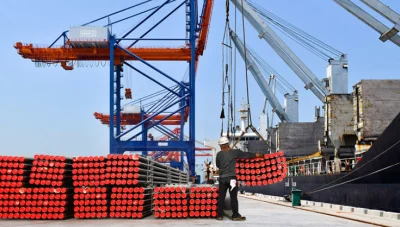
The charterer may also not have his own cargo, but instead charters a vessel for a certain period of time and trades the ship to carry cargoes at a profit. He can also sub-hire the ship to other charterers in positive market conditions.
The ship broker is essentially a middleman who connects the principals in order to earn a brokerage fee. He can represent either the owner or the charterer in negotiations, and usually specialises in specific areas of cargo carrying. For example, a dry cargo broker focuses on the chartering of bulk carrier vessels. He can represent either an owner looking for a charterer, or a charterer seeking a suitable vessel for shipping his cargo.
Similarly, and as the name suggests, a tanker broker specialises in chartering tanker vessels and has a good understanding of the specific needs for transporting crude oil, gas, oil products, or chemicals.
Shipping Agents are designated to take responsibility for handling shipments and cargoes at the ports on behalf of the owners, fleet managers, and charterers. They handle the essential routine tasks, such as crew transfers, customs documentation, waste declarations and so on, working closely with port authorities. They can also provide detailed information on activities at the destination port, so that the shippers can be aware of situations while the goods are in transit.
- Types of charters
The three most common types of charter contracts are the voyage charter, the time charter, and the demise (or bareboat) charter.
Voyage Charter
The basic hiring of a vessel and its crew for a voyage between the port of loading and the port of discharge is known as a voyage charter. In this type of contract, the ship owner is paid by the charterer either on a per-ton basis, or as a lump sum. Port costs, with the exception of stevedoring, fuel costs, and the crew costs are paid by the owner, and payment for the use of the vessel is known as freight.
Under the terms of a voyage charter, a specific time is agreed for the loading and unloading of the cargo. This is known as laytime, which, if exceeded, obliges the charterer to pay demurrage. Conversely, if laytime is saved, the owner may have to pay despatch to the charterer.
There is also a consecutive voyages clause. This is used when one voyage follows another immediately for an agreed number of voyages within a specific timeframe. The ship is thus going back and forth with an agreed cargo between agreed ports.
Time Charter
A time charter refers to the hiring of a vessel for a specific period of time. Here, the owner still manages the ship, but the charterer selects the ports, decides the routing, and has full operational control of the vessel for the duration of the contract. He pays the fuel costs, port charges, cargo handling costs, commissions, and a daily hire fee.
There is also a trip time charter covering a specific voyage route only for the transportation of a specific cargo. It can be said to be a combination of a voyage charter and a time charter. The responsibilities are similar to those with a time charter (the fixed costs being paid by the owner and the variable costs by the charterer), but as with a voyage charter, the period of the contract depends upon when the voyage is completed.
The Demise Charter
Under the terms of a demise charter, also known as a bareboat charter, the charterer has full control of the vessel. Apart from the capital cost of building the vessel, which is the owner’s responsibility, all other costs including fuel, crew, port charges and insurance, are paid by the charterer. The legal and financial responsibility for the vessel rests with the charterer.
Under the demise clause, the contract can be for long period charters lasting for many years. This is fairly common for tankers and bulk carriers. It can be a form of hire-purchase whereby the charterer eventually acquires ownership of the vessel.
In the leisure industry, the term used is Bareboat Yacht Charter and the Demise Charter term is not used. It is normally a short-term charter for a matter of weeks only. Here, the owner supplies the yacht fully fuelled and in seaworthy readiness. The charterer is expected to pay for the fuel consumed.
Contract of Affreightment
Finally, there is what is known as a contract of affreightment. This is not strictly a charter contract, but is somewhat similar to a voyage charter. Under this type of contract, the owner agrees to transport the goods for the charterer on a specified route and for a specific period of time. More than one ship can be used and, in contrast to a true charter, there is no laytime period and no demurrage is payable.
- Who pays what?

There are various cost components applicable to all charter contracts. These can be summarized as follows:
In all cases, the owner is responsible for the capital cost of building and equipping the ship. The operating costs (OPEX), i.e. operating and maintaining the ship and complying with all applicable rules and requirements, are also paid by the owner in voyage and time charters. In demise charters, however, the operating costs are paid by the charterer.
Periodic costs are those that are incurred at certain intervals of time. These include, for example, periodic technical inspections and surveys for class classification purposes. Here again, the owner is responsible with time and voyage charters, but not for demise charters. In demise charters, it is the charterer who pays such periodic costs.
Voyage costs cover the fuel, any right of passage dues, such as canal dues, towage and piloting costs, as well as port agency costs. With time and demise charters, the voyage costs are paid by the charterer. Only in voyage charters are these costs paid by the owner.
The same is true of cargo handling costs – the cost of loading and discharging the cargo. With time and demise charters this is the responsibility of the charterer, while the owner pays these costs only with voyage charters.
Sign up for our newsletter for latest news, insights and innovations
Voyage Charter Vs Time Charter – All You Need To Know

Businesses related to the Maritime industry come across the term “Charter” every now and then. And if you are planning to start your own business in this domain, then it is a must that you understand what charters are.
By looking from a trade perspective, ensuring that the owner of the vessel makes higher profits from its use is the responsibility of the seafarers. But for those who are new to the sector and the word, selecting the right charter type can be a challenge. This is where our TRANS-series support comes in.
Its inclusive features and Charter Management services makes chartering easy for the seafarers. However, before we dive into that, it’s time to help you understand what Charter exactly means:
Concept of Charter
Most commercial vessels, boats, or other ships are under private ownership. And a large part of these are individual owners who see these as investments. They have no shipping or ferrying requirements from these.
Rather than using the boats themselves they lease it out to third parties, who actually need the ships for a wide range of applications. In maritime terminology, this lending procedure is called Chartering. Moreover, the complexity of the process makes getting services like TRANS-series useful for maritime businesses.
Since the number of individual owners are increasing, chartering has emerged as a popular trend in the global seafaring industry.
There are different types of charters. However, two of these are most common and important, namely:
Voyage Charter
Time charter.
In this article, we will discuss both these types in detail.
In chartering, a voyage charter is the legal agreement that states that the owner of the boat has authorized the second party to transport a specific cargo on their vessel. This contract also defines the duration and other details of the voyage along with the accepted payment.
Under this charter type, the charterer has to pay for using the cargo space on the vessel. It can be for either one or multiple trips to the stated location. In case of multiple voyages, the income of the owner will depend on the cargo quantity brought on the ship. However, it may be deposited as a lump sum amount, regardless of the cargo quantity.
Directives to Remember:
- The Operator should clearly state the following details to the vessel owner by a telegram or email. This should be done immediately after the charter party has completed their negotiations. Stating the information may seem repetitive, in some cases, but it is equally important. As an Operator, you will have to provide:
- Tendering of Notices
- Load/Discharge Rates
- Bunker Arrangements
- And any other important data that might be related to the cargo and voyage
- On the receipt given to the Charter party, Operators should double-check the advance details against the Charter. If they find any differences, they may discuss it with their clients before sending a copy of this document to the Owner.
- In case the Charter party is unavailable, then the Operator is also responsible for forwarding and sharing any information about the contract to the client or Charter.
- If the Charterer or their agent state any requirements to the Owner, then they should convey these to their Operators properly.
- And all the documents and paperwork should be neatly kept in the Voyage File. Our TRANS-series services will help you in efficiently managing all these instructions.
The second type of charter is Time Charter where the Owner of the boat gets paid on the basis of the duration the Charter requires it. It is easy to understand why it is different from Voyage Charter, as the latter owner has to leave complete equipment, crew, and boat in the hands of the Charterer.
On the other hand, in Time Charter, Charterer gains complete control over the vessel and gets a say in related decision-making during the trip. He is obliged to take care of handling operations, port expenses, and even arranging bunkers. To effectively manage this, you should consider getting our TRANS-series services!
On/Off Hire Surveys:
In Time Chartering, the Operator is responsible for organizing off-hire and on-hire surveys as required while keeping their client’s requirements in mind. They also have to give their best in ensuring that these surveys are completed at low expenses. For this, they can either coincide on previously done off-hire surveys or share the charges with the Charterer.
Party Obligations
Time Charter Parties:
Time Charter contracts ensure that the control over technical operations of the vessel remain with the Owners. While the Charterer has to handle all the commercial operations of the boat.
In this type of agreement, the shipowner has to oversee all expenses related to ship maintenance, insurance, and crewing. However, port charges and fuel intake of the vessel will be paid by the Charterer.
Voyage Charter Parties:
On the other hand, in Voyage Charter, the contract specifies that all commercial and technical management of the boat will be done by the Owner. They will not only have to focus on getting insurance for their boat and its complete maintenance.
But, they will also have to take up expenses related to the crew recruiting, port charges, bunkers, and other expenditures. Need a little help in managing these accurately? Then check out our TRANS-series services that will get you finest Charter Management support.
Evaluating Contract Amount
As stated above, for Time Charter contracts, the Charterers have to pay based on the total duration of the vessel hire. Hence, the Owner gets the income based on the daily hire charges of his boat.
In Voyage Charters, the Charterers are required to pay complete freight to the vessel Owner. The freight charge is computed by assessing the amount paid to the shipper for chartering the boat, regardless of the cargo size. Or you can also calculate it by taking the total weight of the cargo being transported through the ship.

Duration of Contract
These agreements are signed only for a limited time period, without providing any specified route to the other party. Throughout this charter period, the Charterer can use the vessel for trading on the recognized trade routes without restrictions.
These contracts are signed for carrying a particular quantity of goods on the preset by the two parties. They also are obliged to carry the stated commodity onboard between pre-decided ports only. After the said trip completes, the contract is automatically terminated.
Related Blog

Receivable Management – A Complete Billing Platform
What are Receivables? Receivables are the dues a customer owes to the business, in exchange of services s/he gets from.....

Fixed Asset Schedule
This fixed assets schedule is important to maintain because it is highly critical in understanding the accounts of the company......

Bunker Calculation, Formula and Example
Such reading and evaluations require formula-oriented calculations while considering those dynamic factors and varying inputs. Bunker calculation is one of.....
Mandatory Details
Details required.
Please fill out the information below, and you will be eligible to download our company brochure.

Voyage Charter : Definition & Full Guide
- By MascotMaritime
- April 22, 2022
- 3 mins read

Table of Contents
What is a voyage charter.
Voyage charter definition : The voyage charter is a contract (voyage charter party) between the shipowner and the charterer wherein the shipowner agrees to transport a given quantity of a shipment, using a pre-nominated vessel for a single voyage from a nominated port (say X) to a nominated port (say Y), within a given time period.
Who is a voyage charterer? What is the freight & voyage charter party?
The person who charters the vessel is called the voyage charterer , the payment is called freight & the contract is called the voyage charter party. The freight rate is calculated as $/tonne of shipment.
What is the most significant part of a voyage charter party?
The most significant parts are the description of the voyage, size & capacity of the vessel, cargo, the allocation of duties and costs in connection with loading and discharging, the specification of the freight, and the payment of the freight, the laytime rules, the allocation of the liability for the cargo and the allocation of other costs and risks.
Depending on the circumstances, other questions and clauses can be very important in the negotiations between the owners and the charterers.
In this type of charter, the vessel must be in the position that the owner specified when the charter was concluded & the vessel must, without undue delay, be directed to the port of loading.
At the port of loading, the charterer must deliver the agreed cargo.
The cargo must not be dangerous cargo unless otherwise agreed. The cargo must be brought alongside the ship at the loading port & must be collected from the ship side at the port of discharge.
Mainly with the bulk cargoes, the charterer often undertakes to pay to load and discharge & often clauses of f.i.o or f.o.b are met. Very often parties agree on f.i.o.s or f.i.o.s.t terms.
In voyage charter, the discharge port need not be nominated in the charter party & in such cases, the charterer must have the right later to direct the vessel within a certain range to a specific port of discharge.
In a voyage charter where the charterer carries out loading &(or) discharging, it is generally agreed that the charterer will have a certain period of time at his disposal for loading & discharging of the vessel & it is called laytime .
If the charterer fails to load and(or) discharge the cargo from the vessel within the laytime, then he has to pay compensation for the extra time used called demurrage . Once in demurrage always in demurrage.
In other cases, if the charterer loads &(or) discharges the cargo from the vessel more quickly than the agreed laytime time, then he is entitled to claim compensation (only if agreed earlier) called despatch money.
In voyage charter, unless lumpsum freight is paid, the owner may claim freight compensation if less cargo is delivered, or cargo is delivered in such a way that ship’s capacity cannot be utilized due to broken stowage . This freight compensation is called deadfreight .
Voyage charter party agreement example:
Click here to see the example of a voyage charter party (NORGRAIN 73).
What are the factors which influence the freight rate in a voyage charter market?
In the voyage charter market, rates are influenced by cargo the charterer must deliver the agreed cargo size, commodity, port dues, and canal transit fees, as well as delivery and redelivery regions.
In general, a larger cargo size is quoted at a lower rate per tonne than a smaller cargo size. Routes with costly ports or canals generally command higher rates than routes with low port dues and no canals to transit.
Voyages with a load port within a region that includes ports where vessels usually discharge cargo or a discharge port within a region with ports where vessels load cargo also are generally quoted at lower rates because such voyages generally increase vessel utilization by reducing the unloaded portion (or ballast leg) that is included in the calculation of the return charter to a loading area.
What are the costs paid by the shipowner & charterer in a voyage charter?
In a voyage charter, the shipowner retains the operational control of the vessel and pays all the operating costs (crew, fuel, freshwater, lubes, port charges, extra insurances, taxes, etc.), with the possible exclusion of the loading/unloading expenses.
The charterer’s costs are usually costs & charges relating to the cargo.
What are the types of voyage charter?
It can be of the following types:
- Immediate – which is carried out within weeks of the contract agreement and the agreed freight rate is called the spot rate.
- Forward – which is scheduled & fulfilled at the agreed time in the future, for example in say three months.
- Consecutive – which refers to several same consecutive voyages.
Related Popular Articles
Seafarers happiness on board – key factors.
Seafarers lead a challenging life, navigating the seas for extended periods, enduring isolation, facing unpredictable weather, and maintaining vessels. Their resilience and commitment ensure global

Problems faced by seafarers – Essential Insights for Sailors
Indeed, working at sea presents numerous challenges that demand both physical and mental resilience from seafarers. The maritime environment can be unforgiving, subjecting individuals to
STORMS – Tropical Revolving Storms
What is a tropical revolving storm? A tropical revolving storm is a powerful meteorological phenomenon characterized by a low- pressure center, strong gale-force winds circulating
One Response
- Pingback: INCOTERMS 2020 : A MUST READ FOR SHIPPING, CUSTOM & LOGISTIC PROFESSIONALS! - MascotMaritime
Leave a Reply Cancel reply
Your email address will not be published. Required fields are marked *
Save my name, email, and website in this browser for the next time I comment.
Terms & Conditions | Privacy Policy | Disclaimer
World Clock ×
Sea Law Central
Understanding time charter contracts in maritime law: a complete guide.
Maritime law is a complex and ever-evolving legal field that governs various aspects of the maritime industry. One crucial component of maritime law is time charter contracts. These agreements play a vital role in regulating the relationships between vessel owners and charterers. In this complete guide, we will delve into the ins and outs of time charter contracts in maritime law, exploring their key components, importance, legal aspects, and their role in the maritime industry. Whether you are a shipowner, charterer, or someone interested in maritime law, this guide will provide you with a comprehensive understanding of time charter contracts and their implications.
Also read: The Implications of Average Agreements on Maritime Insurance: A Comprehensive Overview
Table of Contents
Key Components of Time Charter Contracts
Time charter contracts outline the terms and conditions under which a vessel is leased to a charterer for a specific period. The contract typically includes several key components that define the roles, responsibilities, and obligations of both parties involved. Understanding these components is crucial for ensuring a smooth and mutually beneficial agreement.
One essential component of a time charter contract is the description of the vessel . This section provides detailed information about the vessel, including its name, type, specifications, and classification. It also outlines any requirements for the vessel’s condition and maintenance during the charter period.
Another important element is the charter period . This specifies the duration for which the vessel will be chartered, ranging from a few months to several years. The contract may also include provisions for extension options, allowing the charterer to extend the charter period if needed.
Furthermore, the charter hire is a fundamental aspect of time charter contracts. This refers to the agreed-upon payment that the charterer will make to the shipowner in exchange for the use of the vessel. The contract should clearly outline the amount, timing, and method of payment, as well as any provisions for adjustments or foreign exchange rate fluctuations.
Also read: Navigating Average Agreements: Practical Advice for Shipowners and Operators
Importance of Time Charter Contracts in Maritime Law
Time charter contracts are of utmost importance in maritime law due to the numerous benefits they offer to both shipowners and charterers. These agreements provide stability and clarity in commercial operations, ensuring that the interests of all parties involved are protected.
One significant advantage of time charter contracts is the predictability of income for shipowners. As the charterer typically pays a fixed charter hire over the agreed period, shipowners can rely on a steady revenue stream. This stability allows them to make informed financial decisions and plan for vessel maintenance, upgrades, or crew arrangements.
For charterers, time charter contracts offer flexibility and control . Charterers can secure access to vessels without the long-term commitment associated with vessel ownership. They can adapt their fleet size and composition to meet fluctuating market demands and take advantage of lucrative opportunities as they arise. Time charter contracts also enable charterers to establish their specific trading routes and schedules, contributing to operational efficiency.
Also read: Average Agreements: How They Contribute to Maritime Dispute Resolution
Legal Aspects of Time Charter Agreements
Time charter contracts involve various legal aspects that require careful consideration by both shipowners and charterers. Understanding the legal implications ensures compliance with applicable maritime laws and minimizes the risk of disputes or legal complications.
One crucial legal aspect of time charter agreements is the duty of utmost good faith . This principle requires both parties to act honestly, transparently, and with mutual trust. Shipowners must accurately represent the vessel’s condition, capabilities, and any existing restrictions. Charterers, on the other hand, should provide accurate information about their trading purposes, cargo type, and any specific requirements.
The contract should also clarify the responsibility for repairs and maintenance . While shipowners are generally responsible for the vessel’s overall maintenance, time charter contracts often outline specific obligations of the charterer regarding repairs arising from charterer’s negligence or cargo-related damages. For example, the contract may stipulate that the charterer is responsible for any repairs resulting from cargo loading and unloading operations.
Also read: Legal Considerations for Drafting Effective Average Agreements in Maritime Law
Maritime Law and Time Charter Contracts Explained
Maritime law plays a significant role in shaping time charter contracts and governing the rights and obligations of shipowners and charterers. To ensure a thorough understanding of time charter agreements in the maritime industry, familiarity with the relevant legal framework is essential.
One primary source of maritime law that governs time charter contracts is the United Nations Convention on the Law of the Sea (UNCLOS) . This international treaty provides a comprehensive legal framework for maritime activities, including provisions for vessel ownership, registration, navigation rights, and marine pollution prevention. While UNCLOS does not specifically address time charter contracts, it establishes the broader legal environment in which these contracts operate.
Another crucial aspect of maritime law related to time charter contracts is maritime liens . A maritime lien represents a claim against a vessel, often arising from unpaid debts related to the operation or use of the vessel. Understanding the potential risks associated with maritime liens is essential for both shipowners and charterers to protect their interests and avoid unnecessary legal disputes.
Also read: Average Agreements and Risk Management in Maritime Law: Best Practices
Complete Guide to Time Charter Contracts in Maritime Law
In this complete guide, we have explored the key components, importance, and legal aspects of time charter contracts in maritime law. Time charter agreements provide a framework for vessel leasing, offering stability, flexibility, and predictability for both shipowners and charterers. By understanding the various elements of time charter contracts and their implications within the broader context of maritime law, stakeholders in the maritime industry can navigate these agreements effectively and ensure mutually beneficial outcomes.
To summarize the key points covered in this guide:
- Time charter contracts consist of key components such as vessel description, charter period, and charter hire.
- Time charter contracts are important as they provide stability, predictability of income, flexibility, and control.
- Legal aspects of time charter agreements include the duty of utmost good faith and responsibility for repairs and maintenance.
- Maritime law, including UNCLOS and maritime liens, plays a significant role in shaping time charter contracts and governing their application in the maritime industry.
With this comprehensive understanding of time charter contracts in maritime law, stakeholders can confidently engage in these agreements, leveraging their benefits while mitigating potential risks.
Frequently Asked Questions
What is a time charter contract in maritime law? A time charter contract is a legal agreement between the owner of a vessel, known as the “charterer,” and the party who charters the vessel, referred to as the “charter party.” It allows the charter party to hire the vessel for a specific period, typically for a fixed daily or monthly rate. What are the key components of a time charter contract? The key components of a time charter contract typically include details about the vessel, such as its name and specifications, the duration of the charter, the agreed charter rate, responsibilities of each party, and any applicable terms and conditions. Why are time charter contracts important in maritime law? Time charter contracts play a crucial role in the maritime industry as they provide clarity and legal protection to both the charterer and the charter party. These contracts ensure that the rights, obligations, and responsibilities of each party are clearly defined and agreed upon. What are the legal aspects of time charter agreements? Time charter agreements involve various legal aspects, including the compliance with international maritime regulations, the obligation to maintain the vessel in good condition, liability for any damages caused, dispute resolution mechanisms, and insurance requirements. Could you explain how time charter contracts and maritime law intersect? Maritime law governs the legal principles, rules, and regulations that apply to maritime activities, including time charter contracts. Maritime law provides a framework for resolving disputes, addressing liability issues, and establishing rights and obligations between the charterer and the charter party in time charter contracts. What are some benefits of entering into time charter agreements? Time charter agreements provide several benefits, such as providing access to vessels without owning them, flexibility in terms of duration and usage, cost control through fixed rates, and the ability to meet specific transportation needs efficiently. What considerations should be taken into account before entering into a time charter agreement? Before entering into a time charter agreement, it is important to consider factors such as the reputation and reliability of the charterer, the condition and suitability of the vessel, the prevailing market rates, the potential duration of the charter, and the financial implications of the contract.
Get more stuff like this
Subscribe to our mailing list and get interesting stuff and updates to your email inbox.
Thank you for subscribing.
Something went wrong.
The form collects name and email so that we can add you to our newsletter list for project updates. Checkout our privacy policy for the full story on how we protect and manage your submitted data!
Related Posts
Recent case studies: lessons learned from charter party disputes, mitigating risks: how compliance with maritime law can benefit ship owners, admiralty law and personal injury claims: a guide for seafarers and offshore workers, exploring the benefits of bareboat charter contracts in the maritime sector, the impact of international conventions on marine insurance in maritime law, towage contracts: essential clauses and considerations, benefits of marine insurance for shipowners and operators in maritime law, the impact of admiralty law on limitation of liability in maritime disputes, understanding the legalities of sale and purchase agreements in maritime law, how technology is influencing time charter contracts in maritime law, about the author.
Sea Law Central Team
Leave a reply cancel reply.
Save my name, email, and website in this browser for the next time I comment.
Get more stuff like this in your inbox
Elements of Time Charter Contracts & Voyages
Veson university’s hire management basics courses for industry-based continual learning.
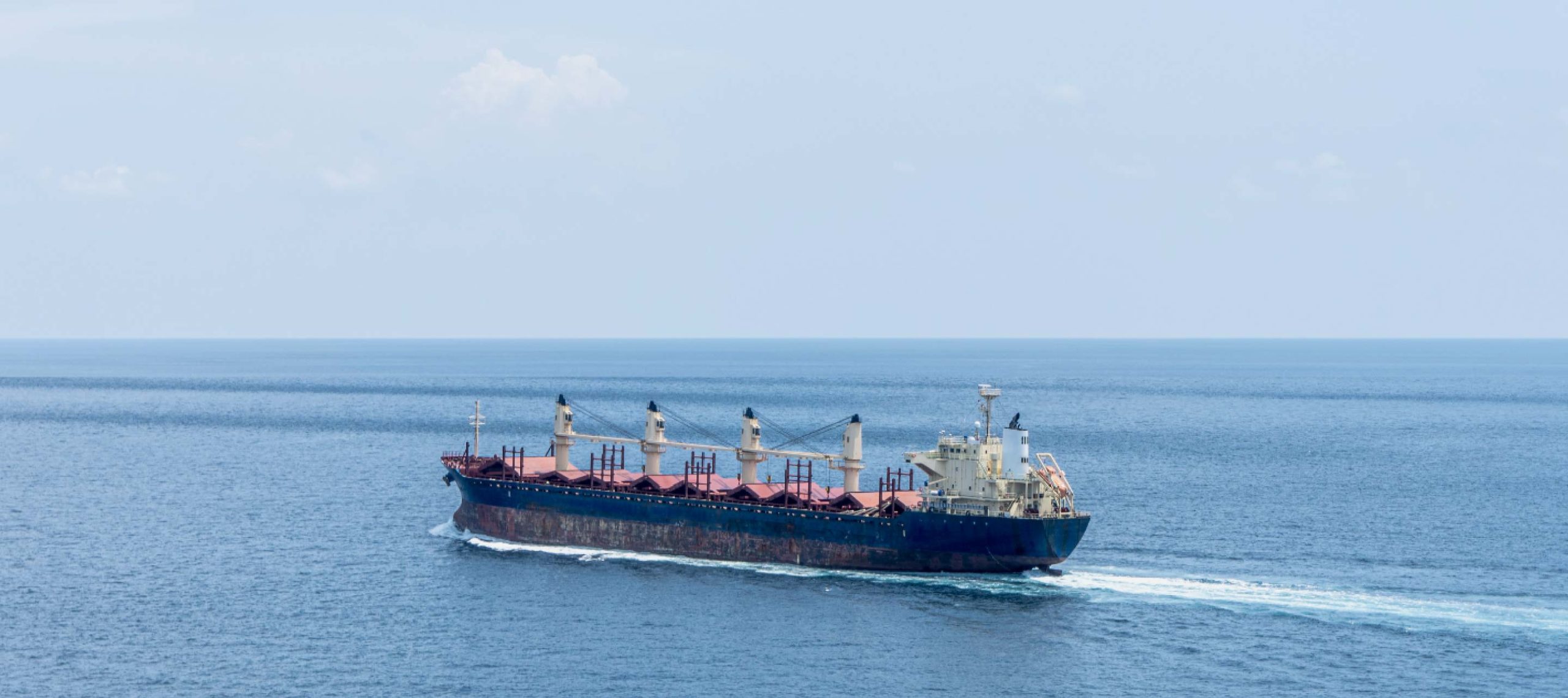
May 5, 2021

Nassia Katroutsou Learning Experience Consultant
3 Minute Read
In the world of maritime shipping, there are three major elements: vessels, cargo, and the contracts that determine how the two interact. When a vessel is needed to move cargo, it can be employed in several different ways.
A vessel can be employed on a (single) voyage basis, which means that the Charterers pay Freight to the Owner in order to perform their cargo transportation. Alternatively, a vessel can be employed on a Time Charter basis, which means that the vessel is hired by the Charterer for an agreed period of time against a payable hire rate to the Owner for the duration of the time charter period.
For the seasoned industry professional, these concepts are all too familiar. For the unfamiliar newcomer, the nuanced inner workings of the industry are strange and foreign. Regardless of your experience level, understanding and re-evaluating maritime shipping fundamentals, such as the elements of Time Charter, is crucial to better understanding your dynamic function and how it is changing within this ever-evolving industry .
In this blog post, we’ll review the elements of Time Charter and explore what factors impact the choice between Voyage and Time Charters.
Want to dive deeper into these fundamental concepts? Sign up for our free Elements of Time Charter course on Veson University!
Elements of Time Charter
A Time Charter (TC) is a type of vessel chartering and a vessel employment contract between two counterparties: the Owner and the Charterer . Each counterparty has different responsibilities and concerns, which are captured in the Charter Party Agreement .
Some key Time Charter contract terms to know are:
- the vessel’s description
- the time charter period
- the delivery and redelivery range
- the hire rate
- bunker consumption costs
The details of these contract variables have a profound impact on the nature of the agreement and the decisions that key stakeholders make.
For example, from the beginning of the time charter negotiations, the Owner must provide the Charterer with the vessel’s full description, commonly called “ Time Charter Description “. The detailed vessel’s description includes information such as the vessel’s speed and consumption rates, which are important for the Charterer to be aware of in order to accurately and efficiently plan the voyages which they need to perform during the Time Charter, and plan the cargo operations .
What Factors Impact the Choice Between Voyage and Time Charter?
This is a widely discussed topic and is one of the most common strategic decisions for both the Owners and Charterers. Some key factors affecting this decision making include market volatility , cargo availability , repositioning of the vessel , and financial reasons .
These factors create expectations from both parties, and these expectations are reflected in the market fluctuations and, essentially, on the freight rates. A low supply of vessels will result in higher freight rates, and low demand from the cargo side will result in lower freight rates. This is commonly called the spot market .
Counterparties’ perception of the market’s projection will be a very important factor in making a decision between voyage or TC. In this respect, and in an effort to avoid potential volatility or to control costs, the counterparties will consider fixing the vessel on a TC.
Another common business scenario is that a long TC may be part of a financial package with the purchase of the vessel. In other words, the financial and operational management of the fleet will impact this kind of decision.
Charterers who wish to take control of a vessel or a fleet to manage their own needs for cargo transportation and do not want to bear the purchase and running cost of the vessel will be in favor of the TC option. This means that the TC option is seen as a business opportunity with no asset burden for the Charterers.
Learning Industry Fundamentals with Veson University
At Veson Nautical, we believe in continuous learning, which is why we offer both product- and industry-based training opportunities based on our unique experience with over 300 diverse clients in the industry. A common technical and industry understanding across your team is critical to establishing shared priorities, foundational knowledge, and ultimate collaboration.
To provide a dynamic, deep-dive learning experience of what a Time Charter is about, we have created a Elements of Time Charter course offered through Veson University , which is the first of the three part series out of the Hire Management Basics course. Master the course for free now!
VESON UNIVERSITY COURSE
Elements of time charter course.
Start The Free Course
About the Author
Nassia is a member of Veson Education Services and designs learning content for Veson University. Having extensive experience with commercial maritime shipping and VIP project implementations, she is collaborating with SMEs to build unique learning experiences for Clients, Learners, and Veson employees. She is currently a Learning & Development member of CIPD.
Receive the latest from The Logbook, directly to your inbox.
You might also like....

Veson Interview: Navigating the Path to a Culture of Continuous Learning

6 Minute Read

3 Key Maritime Technology Questions: What Industry Professionals Shared at ONCOURSE 2023

5 Minute Read

Leveling Up Your System Knowledge: A Look at Veson’s Live Training Workshops

Looking for more helpful content?
Check out the Veson Resource Center.
Explore all resources
Privacy Overview
freightcourse
Contract of affreightment (coa): definition, types & comparisons.
Shipping cargo via sea freight is one of the most popular modes of transport in the world of logistics. Today, nearly 90% of global shipping is done via container ships, tankers, dry bulk carriers, and general cargo vessels.
Although shipping cargo with ocean carriers is slower than rail, road, or air freight, it’s the most economical option for shippers. Moreover, for large equipment and bulk cargo, it’s often the only option.
Chartering a vessel mandates certain documentation and procedures before a shipper can charter a vessel to move their cargo from A to B, such as a Contract of Affreightment (COA), which is a contract between the shipowner and the shipper.
This vital piece of documentation puts the onus on the ship owner or carrier to transfer a certain amount of cargo within a specified timeframe.
In this article, we’ll go into detail about what a COA entails and explain how it’s different from other essential documentation, such as a time charter, voyage charter, and charter party agreement.
What Is a Contract of Affreightment (COA) in Shipping?
A Contract of Affreightment (COA) is a legally binding contract between a shipowner (carrier) and a charterer (the shipper). This contract certifies the goods or equipment to be transported with its respective specifications such as weight and quantity, the destination, and the timeframe for delivery.
It also obligates the charterer to pay the freight even if the shipment isn’t ready. This way, carriers can choose from different vessels and book the required amount of storage space for a particular shipment.
Moreover, a COA is often used for more than one shipment at different intervals. As a result, charterers that opt for sea freight are certain they will have a vessel available to carry their cargo when required.
Although many parties draft bespoke agreements, Contracts of Affreightment are governed by the Baltic and International Maritime Council (BIMCO).
This council requires charterers and shipowners to follow certain standards, including VOLCOA, GENCOA, and INTERCOA 80. However, VOLCOA is a forerunner of GENCOA. Therefore, we’ll discuss GENCOA and INTERCOA 80 in detail below.
The GENCOA is a standard contract of Affreightment that was established by BIMCO specifically for dry bulk cargo transport via the sea. Therefore, voyage charter parties looking to move coal, grain, iron ore, sugar, cement, and other dry items are recommended to adhere to this standard and follow the best practices.
INTERCOA 80
Similarly, the INTERCOA 80 is a COA designed by BIMCO for charter parties looking to move liquids and gases in bulk quantities using tankers. Common examples include crude oil, liquid petroleum gas, liquified natural gas, and other petrochemicals.
What Information Can Be Found In a Contract of Affreightment?
Most COAs are relatively straightforward and typically comprise a framework agreement outlining the terms intended to apply to all shipments and voyages for both parties (charterers and shipowners).
For instance, it defines the cargo quantity to be shipped during each voyage along with the accepted ports within range. However, it doesn’t specify a particular vessel to be used, which gives shipowners the freedom and flexibility to choose from several options.
Here are some of the most common details found in a COA:
- Owner Details – Standard COAs start with a preamble that outlines the shipowner’s details, including their name, address, telex number, and company or brokerage name. This section also contains the place and date of the contract.
- Charterers’ Details – Similarly, a COA contains the charterer’s details, including their name, address, and telex number.
- Type of Cargo – This section briefly describes the type of freight the charterer intends to move (dry bulk cargo, liquids, gas, etc.). For tanker shipments, it also mentions the specific gravity.
- Ports or Ranges – The port and ranges section of a COA covers the loading and discharge ports of all shipments within the agreement period. It also outlines the range of ports that are suitable for loading and unloading a certain cargo type.
- Quantity of Cargo – This section specifies the minimum and maximum amount of freight to be transported per shipment within a specified timeframe. It would also specify the total quantity to be shipped for the full duration of the contract.
- Period of Contract – The period of the contract marks the first layday for the initial vessel and the final/canceling data for the final vessel. As a COA is usually effectuated for long-term transportation arrangements, the period of the contract may extend over a number of years.
- Schedule of Shipments – The schedule section outlines the frequency of shipments from A to B on the agreed routes with the COA. It may also specify the shipping period (days, weeks, or months) in a fiscal year.
- List of Vessels – This section provides the list of vessels the shipowner will use to meet their charterer’s freight requirements. It specifies the length, age, size (capacity), tank coating, pumping capacity, and other details.
- Rates – The rates section outlines the basic cost of moving a shipment from A to B, along with commission, late payment, demurrage, etc. Freight rates depend on many factors, including the destination, shipment weight, and cargo type.
- Bunker Adjustment Factor – This section covers any additional charges levied on the shipowners due to fluctuations in fuel prices (also referred to as bunker prices). This would allow the shipowners to offset any additional costs in the event of a sharp increase in fuel prices.
- Dispute Resolution – The dispute resolution section of a COA mentions the different methods all parties can use to resolve disputes while adhering to lawful practices. Specific locations for arbitrations are typically included here.
- War Cancellation – Finally, the war cancellation section covers the terms all parties have to agree with to cancel the COA in the event of war among specified countries.
Contract of Affreightment vs Charter Party
A contract of affreightment and a charter party agreement are both common pieces of documentation used by charterers and shipowners for sea freight transport, particularly bulk shipments.
However, they’re two distinctive contracts. A COA doesn’t specify the vessel to be used for a particular shipment. Hence, shipowners have more freedom in selecting vessels to move goods from A to B within a specified timeframe and a fixed rate.
Conversely, a Charter Party Agreement has more detailed clauses related to vessel selection and management. This maritime contract allows charterers to use a particular vessel or part of it to move cargo from one port to another.
If both contracts are used together, the terms of the COA will supersede the charter party terms in the event of a conflict in any clause. As a result, most charterers use a COA in conjunction with the latter to facilitate and protect their shipments and prevent unnecessary delays or issues caused by conflicts.
However, there are two types of Charter Party Agreements. We’ll explain how each type differs from a Contract of Affreightment below:
Contract of Affreightment vs Time Charter
A Time Charter is a type of Charter Party Agreement that enables charterers to book an entire vessel and its storage capacity while the shipowner and their crewmen navigate the ship. Moreover, they can also select their crew and aren’t responsible for ship maintenance.
In other words, a Time Charter is essentially a leasing agreement between a shipowner and a charterer. Unlike a COA, this agreement has a short tenure, often between a few days to a year, depending on the number of shipments required.
Moreover, Time Charters don’t require full payments upfront. Charterers can pay charges as they arise during their voyages or every quarter.
Contract of Affreightment vs Voyage Charter
A Voyage Charter is the second type of Charter Party Agreement that leases out a particular vessel to a charter on a voyage basis instead of a time basis. The agreement outlines the destinations, ports of call, cargo restrictions, and undertakings by the charterers.
The shipowner mans and navigates the ship just as with Time Charters. Additionally, they also pay the duties and berthing charges at the ports. Unlike COAs, which require upfront payment, Voyage Charters enable charterers to pay on a per-ton or lump-sum basis.
Most shippers use this freight method to transport full cargo on a single voyage. Nevertheless, it is important to note that the COA terms would supersede the terms in the Voyage Charter when both are in effect simultaneously.

Get Free Course Access
If you enjoyed the article, don’t miss out on our free supply chain courses that help you stay ahead in your industry.

Gerrit Poel
Co-Founder & Writer at freightcourse
About the Author
Gerrit is a certified international supply chain management professional with 16 years of industry experience, having worked for one of the largest global freight forwarders.
As the co-founder of freightcourse, he’s committed to his passion for serving as a source of education and information on various supply chain topics.
Our platform is dedicated to teaching important fundamental principles and evolving best practices in supply chain management.
Home about careers, courses resources consultation, contact privacy terms.

A Layman’s Guide to Laytime, Charter party Agreement and Voyage Charter
The word “Charterer” is probably as old as the word “Ship” itself.
Do you keep hearing this word so regularly?
Well, who doesn’t?
From seafarer’s point of view, it is so much important to understand these terms.
From commercial point of view, it is the moral responsibility of the seafarers to ensure that the ship owner profits from the ship operation.
And for this reason, we must understand when and where our loyalties lies.
But sometimes it becomes difficult to get a hang of all of it.
Not anymore.
In this blog, we will discuss about the terms charterer and charter party agreement.
Concept of Charter party agreement
It is all business.
And like in all kind of business, there are at least two parties involved, one of which provide a service or product to the other for a price.
With respect to carrying the cargo onboard the ships, these two parties are,
1) Ship owner who has the ship and provide the space on the ship to carry the cargo.
2) Shipper who has the cargo and wants a ship to transport the cargo
Then where does the term charterer fits into this?
Charterer is the party that has chartered (think of simple word “hired”) the ship.
If the shipper has chartered the entire ship then shipper will also be the charterer.
In most of the cases, charterer is a kind of middle man between shipper(s) and shipowners
This is particularly the case if there are more than one shipper.
For example, if the vessel is to load 50000 tons of cargo, there could be 10 shipper, say each of them with 5000 tons of cargo.
Alone none of the shippers would want to hire the entire vessel of 50000 tons capacity for their 5000 tons of cargo.
So they contact a charterer for transporting their cargo.
The charterer’s job is to find a vessel for the cargoes they have from different shippers and maximazing the space on ship they plan to hire.
Charterers may not be the only person involved in filling the gap between shipowner and shipper.
Sometime there are some other companies or persons who help shipper, charterer and shipowner to connect with each other for a fees.
They are called “Brokers”.
So the shipper’s broker is the person or company that help shipper find a charterer for a fees called brokerage.
And charterer’s broker is the person that help charterer find a ship to hire.
The charterer may even have brokers for different purpose. For example charterer may have a broker to find a cargo for the ship they want to hire and they may have another broker to find a ship for the cargo they have in hand.
Broker or no broker, the charterer and shipowner would agree on the terms and conditions which would form “ Charter party agreement “.
Charter party agreement is a detailed document which, apart from various clauses, has informations such as
- When and where the vessel is required to be
- the freight agreed
- If the broker was used, who need to pay the brokerage fee and how much
Even though shipowners is primarily dealing with the charterer, it does not mean that the shipowner would have no relation with the shipper.
Shipper and shipowner are connected by the “carriage of cargo at sea act”, also called COGSA .
And one of the main point of it is that shipowner is required to issue bill of lading to the shipper for the cargo loaded onboard.
And with that each of the shipper have entered into an agreement with the ship owner which is called “Contract of carriage”.
While the “charter party agreement” is a formal agreement, the contract of carriage is governed by various laws and regulations such as Hague-Visby rule .
Charter party agreement supplement the contract of carriage.
Usually you would find a mention of the charter party agreement in the bill of lading. The wording in the bill of lading could be something like this.
This shipment is carried pursuant to charter party agreement between “ Charterer’s name ” and “ Carrier’s name ” and all the terms, clauses, conditions, liberties and exceptions whatsoever contained therein are incorporated into this bill of lading.
But do the shipowners and charterers do this exercise of negotiating the format of the charter party agreement each time they do the business together.
Absolutely not. Hell, it would take a lot of time.
Instead they use pre-defined forms. These forms are developed by Independent International stakeholders such as BIMCO and INTERTANKO and are widely used in the shipping business.
There are different forms for different trades.
For example there is form SHELLVOY 6 for use in tanker trade and then there is form AMWELSH 93 for coal dry cargo chartering.
Also if a charterer and ship owner have done the business before, they use the same charter party agreement for the future shipments too.
For this reason, many a times even for a voyage in 2019, you may find the mention of charter party dated in 2016 or even before. In the bill of lading issued even in 2019 , it may read something like,
The shipment is carried pursuant to charter party agreement between “ Charterer’s name ” and “ Carrier’s name ” dated 01 January 2016…..
Now that we understand the concept of chartering, let us understand the different ways in which the ships can be chartered.
Voyage Charter, Time charter, Demise charter
There are different ways in which a charterer can charter (Hire) the vessel.
Charterer can charter the vessel for one voyage (Voyage charter), for a particular time period (time charter) or they can hire and run the vessel as if they are the owner of the vessel (Demise or bareboat charter).
In each type of charter, charterers and shipowners have different area of responsibilities.
Each type of charter is a subject in itself. So in this blog we will explore the voyage charter.
Voyage Charter
It should be clear from the name.
Under the voyage charter, the ship is hired from the ship owner for one voyage.
One voyage could consists of multiple load ports and multiple discharge port.
The best analogy to the term voyage charter is that with hiring an Uber for a ride from one place to the other, sometimes with multiple stops in between.
So when we hire an Uber, we hire just the cab. The cab driver is still under the instructions of Uber.
Similarly, under the voyage charter, the charterer has hired the ship’s cargo space. But the Master and crew still remains under the disposal and instructions of ship owner and ship managers.
When we hire a cab for a ride, we just pay the hire (pre-agreed or by the meter). We do not pay for or are not concerned about the fuel costs or the amount of fuel consumed.
Similarly, under the voyage charter, charterer is not concerned about the fuel consumption. The fuel costs are for the ship owners.
And when we hire an Uber, we do not pay for maintenance of the cab.
Similarly, under the voyage charter it is the ship owner who pays for the maintenance of the ship.
Whenever we have any doubt about anything under voyage charter, just think of this analogy of hiring the cab.
Most likely you will get the answer.
Laytime, Demurrage and despatch
Lord Diplock during one of the leading cases on Laytime described the voyage charter party comprising of four stages .
- Stage 1 is the loading voyage: The voyage from wherever the ship is to the loading port specified in the voyage charter party
- Stage 2 is the Loading operation: The loading of the cargo at the port of loading
- Stage 3 is the carrying voyage: The voyage from load port to the discharge port specified in the voyage charter party.
- Stage 4 is the discharging operation: The discharging of the cargo from the ship to the port of discharging as specified in the voyage charter party.
In the first and third stage, it is only the ship owner that need to perform. For example. ship owner is required to adjust the speed of the ship to arrive at the loading port within the agreed dates (Laycan).
And in the third stage, the ship owner is required to instruct the vessel to maintain the charter party speed.
However it is the second and fourth stage where most of the disputes take place.
Because in these two stages it is mutual reponsibility of the two parties to ensure that cargo loading and discharging is done without any delays.
In case of delays, each one can accuse the other for delays.
It is definately not commercially profiting for the shipowner if the voyage is extended beyond their expectations.
For example, what if the loading of the cargo took 15 days in comparison to just 2 days that shipowner had expected?
Or what if the ship could not berth at load port or discharge port for many days because of other ships ahead in line up?
Too many uncertainties.
But ship owner’s freight (and profits) cannot depend upon so many uncertainties.
So the shipowner and charterers agree on the factors like allowed number of days for loading and discharging.
In chartering terms this is called “Laydays” or “Laytime”.
The laydays is mentioned in the voyage charter party agreement between ship owner and charterer.
It could be mentioned as number of days and hours or as tons per hours or per day.
If the charterer uses more time for loading and discharging than the allowed laydays as per charter party agreement, then charterer is supposed to pay for extra time used.
The chartering term for this additional payment is “Demurrage”.
So we can say that if charterer uses more time for loading/discharging than laydays, they need to pay demurrage to the ship owner.
But if the charterer uses less time than laydays then ship owner need to pay the charterer for the time saved.
The chartering term for this is “despatch”.
Usually the agreed amount of despatch is about half of the agreed amount for demurrage.
Finally at the end of the voyage, a statement is made to shows the time saved and/or extra time taken at different ports.
Below is the simplified version of the laytime summary calculated at the end of the voyage.
This statement would also show the final amount due and to whom it is due. Means if the final amount is demurrage or despatch and how much.
Notice of readiness and statement of facts
For calculation of laytime, it is important to know when the laytime counting and calculation would start.
This information is also provided in the charter party agreement.
In most of the cases, the laytime would commence to start when the vessel has arrived at the port. In chartering term, this is called “ Arrived Ship “.
Legally, a ship is considered as an ‘Arrived Ship” only when
- Ship has arrived at the port of loading or discharging (port voyage charter) or at the designated berth (Berth Voyage charter).
- Ship is ready in all respects to commence loading (or discharging) or the cargo, and
- Master has sent the notice of readiness to the all parties concerned
The charter party agreement contains the information if the voyage charter is a port voyage charter or a berth voyage charter.
Irrespective if it is port or berth voyage charter, from the ship’s point of view it is important that the master of the vessel send the notice of readiness.
Notice of readiness need to state that the vessel has arrived and she is ready in all respect to commence loading (or discharging ) of the cargo.
The laytime would start to commence at this time or sometimes few hours later if specifically mentioned in the charter party agreement.
Since one of the condition for the laytime to start is for the master to send the notice of readiness, it makes it so much of an important aspect.
Statement of Facts
The vessel and the master of the ship are the owner’s representative at the action site (loading port or discharging port).
Ship Owner would know only know the information that we provide them. They would use this information for calculation of any demurrage due to the charterers.
But for the correct demurrage calculation, the information we provide must be correct and we must not miss any important information such as any delays.
That make the statement of facts (commonly called SOF) an important document.
At the least, statement of facts must include
- any delays from shore side or from ship’s side and reason of delay
- any delays because of weather conditions
- Timings for the movement of the ship (such as times for anchoring, anchor aweigh, pilot onboard, NOR Tendered etc)
- Timings related to cargo operations (Commenced cargo operation and completed cargo operation
Master’s actions during voyage charter
Master and ship staff may not see the actual charter party agreement between the charterer and the ship owner.
And it is for their own benefit too.
Because there would be so many things in that which we seafarers are not concerned about.
But when the ship is fixed for the voyage charter, master will receive “Voyage instructions” from the charterer through the ship owner’s commercial team.
The voyage instructions contains the information from the charter party agreement that requires master’s attenstion and subsequent actions.
Master must not miss the points in the voyage orders that requires his actions.
One of the way to do it is to highlight the text of the voyage instructions that require his attention for easy follow up.
Once Master reads the voyage instructions, he may come across insufficient information that need more information or clarification.
Like this one in one of the voyage orders.
Clarification must be sought from the ship operator for any of such information in the voyage orders.
After all it just takes a simple email to get everything in place.
And once everything is clear and in place, it is just about following that.
There are may be only a handful of shipowners that do not rely on the charterer to find the cargo for their vessel.
Having the vessel on charter is so common.
And vessel can be chartered in different ways. Vessel can be on a voyage charter, time charter or demise/bareboat charter.
With respect to voyage charter, master and ship staff must understand few thing
First, when is the laycan for the vessel. This is period in which vessel must arrive at the load port.
If master thinks that vessel may not be able to make it to the loadport in laycan period, the commercial operator must be informed who can then try to extend the laycan.
Second, when the notice of readiness need to be tendered.
If the voyage charter is a port charter, NOR can only be tendered when vessel is at least within the port limits. Usually in this case NOR is tendered when pilot boards the vessel.
If the voyage charter is berth charter, the NOR can only be tendered when the vessel is alongside the designated berth.
Wrong tendering of NOR can make the Notice of readiness null and void and shipowner may loose tons of money.
Lastly, the ship staff need to be make sure that a correct record of statement of facts is kept. This is the document that is used for laytime calculations .
If the charterer uses more time than agreed for loading or discharging the cargo, the ship owner is supposed to get a pre-agreed compensation called demurrage.
Share this:
Related blogs, follow us today on our social network.

About Capt Rajeev Jassal
Capt. Rajeev Jassal has sailed for over 24 years mainly on crude oil, product and chemical tankers. He holds MBA in shipping & Logistics degree from London. He has done extensive research on quantitatively measuring Safety culture onboard and safety climate ashore which he believes is the most important element for safer shipping.
Search Blog
70 comments.

How i wish that our exam books were written so precisely yet so easy to understand .Thanx for all the pain you take .No amount of words would do justice to match the level of you efforts.

Thanks Alok...The readers liking it make all the hardwork worthwhile...

its amazing how you describe anything sir

what if the vessel is about to tender NOR and shipper cancels the order. what would be the penalty

Great article to understand the business with ease as an ASM candidate

Many thanks for writing such articles with such an ease of understanding sir...
Glad you liked it Sukhchain...

Another good read. Thank you for taking time to write articles. All Seafarers must understand the commercial aspects of ships. All the best and I cant wait to read the next one.
Glad you liked it Marlon...

what if the ship could not berth at load port or discharge port for many days because of other ships ahead in line up?Too many uncertainties.But ship owner’s freight (and profits) cannot depend upon so many uncertainties.So the shipowner and charterers agree on the factors like allowed number of days for loading and discharging.In chartering terms this is called “Laydays” or “Laytime” ??? Laydays refer to the time when a ship must present itself to the charter.If the vessel arrives after the laydays ,than contract can be cancelled. -Laycan. Laytime is the amount of time allowed (in hours and days)in a voyage charter for the loading and unloading of cargo.
Thanks for your input Zibi...

Laydays or "Laycan "I think is the correct term not Laytime. :)

Thanks for such simplified explanations. Sir could you please tell the few famous ship brokers names in india and worldwide.
Interocean is one of them...

Thank Captain for simple & detailed explanation. Information is really worthy .
Glad you found it useful Sajjad...

Thanks Capt. Rajeev for this good information in simple way.
Glad you liked it Dharmdeep...

Very well written capt., pls continue the good work
Thanks Capt Pereira...

This is a scholarly article Great job Captain!
Glad you liked it Tunde...

Good job, Capt. Jassal! These mandatory intricacies of ship's business & chartering are excellently presented. Organized and laid out as you have, this blog subject does a great service to anyone who longs to learn more about it & be more familiar with the clauses, details & positions (which is probably everyone, right?) -- including this marine cargo surveyor!
Glad you liked it Capt Edward...

Many thanks
Thanks Rafik...

sir plz explain magnetic compass
I will do that in a different blog...

Once again thank you very much.
Thanks Raju...

Informative Awaiting next one regarding time charterers
Will write on Time chartering too...

many thanks for this jobs cap

How easy way for explain this matter ,really very good job captain I appreciate your good effort waiting more and more
Thanks Ahmed...

sir waiting for your blog on purging and gas freeing cargo tanks

Very nicely explained and written good effort

Very nice explanation capt,

Generally the CP agreement is never sent to ship..and hence for tendering NOR what criteria(LOCATION) shall be followed as Master will not be aware if the C/P is voyage or Port C/P .These days Master tender NOR on arrival and then they keep re tendering every 24 hrs or at important events like POB, or All Fast.What is the logic behind following this and how we can ensure the NOR tendering doesn't becomes null and void. really APPRECIATE YOUR GREAT EFFORTS

if the vessel arrived at the agreed laycan and gave a valid NOR tendered and waited for almost 5 days before berthing, then while berthing the vessel had an accident and the owner requsted a new laycan, the question here is, does cancelling the old laycan result in canceling the demurrage fees caused by it?

When a vessel suffers breakdown typically NOR becomes invalid as the vessel was not in all respects ready to load her cargo.

U don't see such priceless articles often.. Good work cap. Let's make the world a better place to sail????????

To the writer of this blog- what made you write this? IT IS FANTASTIC. Well done. Also your MBA, was it the distant learning one from Middlesex?

On the Laytime Summary calculation, wouldn't it be correct to say that on the loading it was lost 0d-12h-24 min instead of 1d-00-24m?

Captain sahab, if I ever get a chance, I'll surely shake hand and say thank you, for all your efforts in simplifying the topics

can you advise for the following : in case a vessel is on Voyage Charter, and during loading or discharging alongside berth, there is a rainy period, so the daytime for this period should be NOT TO COUNT, correct??? cause there is the terms "weather permitting".

Great article sir......waiting for more.....

Hi. How does the shipbroker locate a suitable ship to transport the cargo?

Good day! You have mentioned different stages of voyage charter. May I ask what are the different stages of Time Charter and Bareboat Charter? Thank you in advance.
Nice blog...pleasure to read

I love your write up. Please, keep exposing our mind to the rudiments of shipping business.

Sir, in voyage charter party at what time and place charter party agreement will start? After ship arriving on laycan days or after giving notice of readiness? And notice readiness when we can give? Is there any specific time only we can give NOR?

I have a question, How to calculate the freight for a Multiport voyage. for example, there is a Cargo loaded from the country (C) and need to discharge its half portion in other countries multiple ports (A) & (B). For single port discharge, the cost is 8$ in port A and in Port B 11$, but the agent says he could fulfill this in 10$ for both ports. Now my question is how is he calculating the freight 10$ for Multiple port ?

Thank you sir for this great effort helping a lot for phase2 law preparation

Hi Sir! I am so pleased to have found your blog, it is absolutely helpful. if it is not too much to ask, do you have a quote sample for time and voyage charter? and the stardard terms and conditions? sorry if I am asking too much. thank you

Excellent blog about chartering service. This blog cleared my doubt about chartering service for ship

could you please advise that how long a shipowner should wait cargo to load on board (if cargo not ready) and no any specific clause written on voyage cp

Hi, Capt Jassal, I find every write up on any marine subject is excellent and easy to understand for students. I highly appreciate the contents of your blog. Regards Capt MK Srivastava , Ex-DPA, The SCI Ltd.

Wonderfully explained

While the blockchains themselves are secure, the applications running on the blockchain may not be. These applications interact with the blockchain through smart contracts, but just like any other software, bugs in the code can lead to security vulnerabilities. For this, we need to involve the auditors who conduct security audits on the smart contract. Smart Contract Audit helps you find hidden exploits and eventually reduce the risk and provide you an extra layer of security. Bug-free code is nice to have in other types of software, in blockchain applications, it is essential.

Dear Capt Rajeev Jassal, with interest i have seen your blog however the title struck me a bit - A Layman's Guide to Laytime - this sounds very familiar, if not accurate, with the dissertation i wrote for the ICS, Institute of Charterers Shipbrokers London, who hold copyright on this. Kindly amend the title of your blog to avoid confusion in the industry as to whom the readers take their information from. With best regards, Erwin de Zwarte, FICS

sir will you pls write on paramount clause , new jasson clause , cesser clause and both to blame collision clause

Such a great explanation! Thank you so much!

This article is a big help for those individuals that are trying to expound their knowledge in shipping. I much appreciated because at present i am taking my master's degree in ship management. Thank you...

Wow, so clearly written that I didn't have to read it twice to understand! Why don't our text books/ Oral notes be like this?! Thank you so much Capt. Jassal.

It’s a great and useful piece of info. I’m happy that you just shared this useful info with us. Please stay informed like this. Thank you for sharing. Here’s another informative content on Common Law Separation Agreement , may find more details here.

thanks alot of info keren bgt

Sir u r the best , undoubtedly . The confidence which i gain every time when ever I read your blog is just unspeakable and it sharpens my knowledge every single time. A teacher like you is what this shipping industry needs and I am glad to find the perfect one . Every time when ever I am in doubt I refer to your blogs and it works miracle .....thanks a ton to you sir .....simply great.
Leave Comment
More things to do on myseatime.

MySeaTime Blogs
Learn the difficult concepts of sailing described in a easy and story-telling way. These detailed and well researched articles provides value reading for all ranks.

Seafarers Question Answers
Ask or answer a question on this forum. Knowledge dies if it remains in our head. Share your knowledge by writing answers to the question

MySeaTime Podcast
This podcast on the maritime matters will provide value to the listeners. Short, crisp and full of value. Stay tuned for this section.
- Resources ›
- Refinery Reference Desk ›
Spot charter
A spot charter is a one-off chartering of a tanker for a single voyage. This is in contrast to a time charter , which is for an extended period of time including multiple voyages.
FIND OUT MORE

Downstream capabilities
View our downstream services.
Read our latest insight articles

Refinery Reference Desk
Return to the homepage.

Energy Insights website
Learn more about energy insights.
- Market Reports
- Market Forecasting & Analysis
- Benchmarking & Diagnostics
- Performance Management
- Global Energy Demand
- Gas & LNG
- Oilfield Services
- [email protected] [email protected]
- Terms of use
- Privacy policy
- Cookie policy
Sign up for Newsletter
Sign up for newsletter

Interested in speaking to an expert or a member of our support team? Drop us a line and we will get back to you within 24 hours, Monday to Friday.
- Get in touch
Subscribe to get our latest insights, industry news, and exclusive access to our tools and reports.
McKinsey uses cookies to improve site functionality, provide you with a better browsing experience, and to enable our partners to advertise to you. Detailed information on the use of cookies on this Site, and how you can decline them, is provided in our cookie policy . By using this Site or clicking on "OK", you consent to the use of cookies.
- Law & Regulations
- Informative
- Tug&Barge&Salvage

Voyage Charter vs Time Charter
Ships, boats and other recreational vessels are owned by a large number of individuals who often purchase them as assets. They do not use these vessels for shipping goods or for ferrying passengers.
Instead, they often lend them out to third party organizations who use them for a variety of purposes. In maritime legal terms, this lending process is known as chartering. Chartering is an important concept of the global maritime trade sector, and is of different types.
This article will delve into the differences between two specific categories of charters – the voyage charter and the time charter.

Credits: DragonImages/depositphotos.com
What is a Charter?
A charter is an agreement between two or more groups known as charter parties, regarding the leasing of a vessel for a fixed set of conditions. The terms and conditions stipulated in the charter are binding on all the parties in the agreement and covers a wide variety of clauses and possible scenarios that may arise. It is considered to be an official document in legal aspects and is required by Admiralty Law to be drawn up in case of any form of vessel hiring or leasing.
A shipowner is the first party in the charter agreement who owns the vessel under consideration. The charterer is an individual or organization who is in need of a ship.
The charterer may have cargo that he wishes to transport, or may further lease out the vessel to third parties.
The shipbroker is a link between ship owners and charterers, and aids in finalizing the terms of the agreement. The terms of the agreement include the duration of leasing, fees, payment instalments, regulations on usage, and detailed surveyor reports on the condition of the ship.
Payment is termed as a freight rate and is remitted to the shipowner at fixed intervals decided in the agreement.
Surveyor reports are important in chartering, as they ensure that the vessel is seaworthy prior to being chartered. Similarly, on completion of a charter agreement, and before final payment formalities, another survey report is conducted to ensure that the vessel has sustained no damage during the lease period.
The charter agreement lays down the responsibilities of each group and stipulates the condition in which the vessel is to be maintained.
There are three main types of charters – voyage charter, time charter, and demise charter.
The demise charter is often known as a bareboat charter, and grants ownership or possession of the vessel to the charterer subject to certain time-bound conditions.
Terms and Features of a Voyage Charter
A voyage charter is a type of charter in which a vessel is leased out for a particular voyage. The charter agreement lists the ports of call, destination, and restrictions on cargo, if any.
Most voyage charters are undertaken by charterers who have cargo that needs to be shipped. For this, they contact ship owners through brokers and arrange a ship for a particular voyage.
Payment of voyage charters can be done in two methods – on a per-ton basis, or on a lump-sum basis .
The per-ton basis involves paying the owner for every ton of cargo or freight transported on the vessel. This is preferred when the cargo tonnage is considerably lower than the gross maximum cargo tonnage of the vessel.
On the other hand, when a higher weight of the cargo is carried, it is advisable to pay on a lump-sum basis . The shipowner must ensure that the tonnage carried on board the vessel is within the acceptable limits of the ship. This includes checking the tonnage of on-deck cargo, and the various load lines of the vessel.
There are some important terms used in a contract agreement, that lays out the time-based rules to be followed for the duration of the contract.
Laytime refers to the time that a charterer is allowed to complete the loading and unloading process at a port of call. Since the owner pays duties and berthing charges at the port, they expect the charterer to hasten the process.
In case the charterer exceeds the laytime laid out in the contract, he is obliged to pay a penalty known as demurrage . This covers the extra costs incurred by the shipowner owing to the delay by the charterer.
On the other hand, if the ship is able to complete the loading and unloading operations before the stipulated time, the charterer can claim payment of a despatch from the owner. This is often seen as an incentive for charterers to complete the port operations as soon as possible.
In voyage chartering, the shipowner undertakes payment of fuel, operation, and employment-related costs. It is their responsibility to hire the officers and other crew members for the voyage either from a pool of individuals working for them, or using brokers as middlemen to source mariners and seafarers.
In addition, the owner must also pay costs such as berthing and loading operations. Any equipment used must also be paid for by the owners.
To recoup these costs, the owners charge a higher rate from the charterer. In general, charterers transporting a one-off consignment prefer voyage charters despite the high cost. This is because they are not tied down to the contract for a long period of time.
Simply put, a voyage charter involves a charterer hiring a vessel for the purpose of a single voyage, in which the route and ports have been pre-determined. The responsibility of duty and other payments along with recruitment is handled completely by the shipowner, while the cargo is the sole responsibility of the charterer.
Terms and Features of a Time Charter
A time charter is a time-bound agreement, as opposed to a voyage charter. The shipowner leases a vessel to a charterer for a fixed period of time, and they are free to sail to any port and transport any cargo, subject to legal regulations.
Although the charterer controls the ship, the maintenance of the vessel still falls under the purview of the owner. They are responsible for ensuring that the vessel meets internationally accepted maritime standards, throughout the course of the agreement. They regularly employ marine surveyors to prepare reports on the seaworthiness of the vessel and make repairs as and when required. The owner will face legal action in case the vessel is found to have some major problem.
The time charter agreement can span anywhere from a few days to a few years. This is a long-term agreement that works on a single rate of payment known as the freight rate.
Payment is to be remitted every quarter and does not fluctuate under ordinary circumstances.
In time chartering, the charterer is responsible for selecting a crew, paying charges that arise during the voyages, and arranging for provisions to ensure smooth operations at every port of call. They must intimate the planned route to the owners in advance. The payment is calculated on a per-day basis, with penalties added at a later time. The cost of fuel, provisions etc. are to be covered by the charterer, while the owner will handle all maintenance-related costs.
The charterer often does not sail on the vessel and provide instructions to the master of the vessel in their stead. This includes permissible cargo, route and ports, required charter speed etc.
Unlike voyage charters that use a rigid payment calculation, there are several provisions for unforeseen delays in time charters.
Since payment is on a daily basis, the charterer may be delayed for a certain reason, and these are covered in the agreement.
Time not included in the final payment is known as off-hire hours . For instance, if a vessel is slowed down because of poor weather that could not have been predicted, the extra time spent is not included in the final time count.
Similarly, if some form of damage occurs and repairs need to be carried out, the duration is considered to be off-hire . Certain clauses can be inserted in the agreement, that allows for a fixed number of off-hire hours. Beyond this, the charterer is charged for delays.
Briefly put, a time charter involves leasing a vessel for a fixed period, on a per-day rate, where the charterer is free to use the vessel. The owner only looks after maintenance-related cost.
Clauses are inserted to protect the charterer from having to pay for hours that were spent due to events that could not have been foreseen.
How to Choose a Charter Type
Voyage and time charters are very different, in their intended use and service conditions. Knowing when to choose each type of charter can go a long way in meeting expectations of the charterer and shipowner.
A voyage charter is preferred in cases where the charterer only needs the vessel for specific voyages that may arise for different reasons. This could be the case when there is an occasional cargo to transfer.
An occasional cargo commonly springs up during sudden surges in demand, when the supply services are down. Thus, companies that may deal in other commodities may enter the cargo industry for that period of time, in order to make a profit.
This can also happen when the charterer has already pressed into service their own fleet of vessels, which forces them to hire a ship from a third party so that they may undertake a single voyage.
Voyage chartering can be tricky for inexperienced charterers, since the matter of the crew and equipment must be handled correctly.
Most owners make arrangements to look after these requirements, but it is mostly based on goodwill. Having a shipbroker negotiate the terms can be very helpful in ensuring that the occasional charterer is not inconvenienced by having a ship without a crew to man it.
A time charter is more commonly used by more experienced chartering firms when there is a long-term requirement for a vessel. Instead of having to specify the ports and routes undertaken by the vessel in the charter agreement, the charterer simply hires the boat for a fixed period of time and takes complete control over the vessel in all but name.
As they are free to sail to any destination with any group of crew and officers, it is beneficial to companies that already deal in shipping. For instance, if a ship is decommissioned or is sent in for repairs, the company needs to be able to procure a vessel for the duration of that period.
Instead of having to book a ship every time they wish to undertake a voyage, they use time charters. Thus, for the duration of the agreement, they will have possession of the vessel and are free to use it, within the purview of the law. This is especially useful since such a charterer will often already have a crew ready to take over the hired vessel.
Another major factor that sways the decision to pick either a voyage or time charter is the finances of the shipping industry. Voyage chartering is considered to be a volatile market since there is no assurance of leasing a boat on completion of an existing contract. Since it is only applicable for a single voyage, the overall volatility of the voyage charter is high.
However, charterers prefer voyage charters for the reason that they can always get a more competent rate from other ship owners. In other words, the owners are at the mercy of the chartering sector.
So, most ship owners prefer time charters, as it guarantees financial returns for a fixed period of time, at a fixed rate. This offers some protection against rapid fluctuation of the chartering rates. However, charterers do not prefer this contract, as it ties them down at a single rate for an extended period.
A one-off charterer always goes for a voyage charter, while a regular charterer prefers time charters. Shipowners are often directly approached by charterers, instead of having marine brokers. Thus, one must have an overall look at various factors influencing the shipping sector, prior to choosing between a voyage and time charter.
Overall Comparison
Table of responsibilities.
Disclaimer: The authors’ views expressed in this article do not necessarily reflect the views of Marine Insight. Data and charts, if used, in the article have been sourced from available information and have not been authenticated by any statutory authority. The author and Marine Insight do not claim it to be accurate nor accept any responsibility for the same. The views constitute only the opinions and do not constitute any guidelines or recommendation on any course of action to be followed by the reader.
The article or images cannot be reproduced, copied, shared or used in any form without the permission of the author and Marine Insight.
Source of This New
Data Analytics & Digitalisation to Drive Global Shipping Industry
Powersoft amplifies upcoming adriatic cruise ship, related posts.
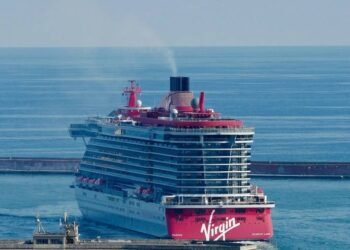
Virgin Voyages Raises $550 Million in Ares Management-led Fundraise

Greek Shipping Minister Resigns Following Comments over Ferry Death

Global Transport Solutions Acquires Ship Spare Logistics
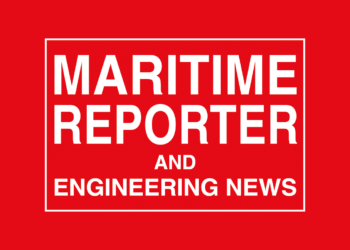
UK Says Russia Fired Missiles at Civilian Cargo Ship
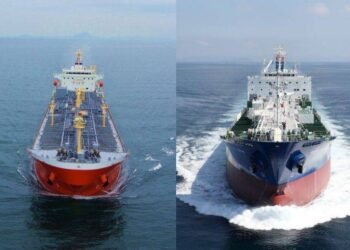
MOL Chemical Tankers to Acquire Fairfield Chemical Carriers

Mounting Evidence Shows Seismic Surveys Can Harm Marine Life

Quick Search
Recent posts.
- Carnival’s Weak Forecast Overshadows Strong Results March 28, 2024
- Baltimore Looks to Recovery as Investigations Begin into Bridge Collapse March 28, 2024
- Ship Photos of the Day – Inside a LNG Carrier’s Enormous Cryogenic Tank March 28, 2024
- Virgin Voyages Raises $550 Million in Ares Management-led Fundraise March 27, 2024
- Xeneta Appoints Luykx as Chief Revenue Officer March 27, 2024

Carnival’s Weak Forecast Overshadows Strong Results
Carnival’s Weak Forecast Overshadows Strong Results By Yashaswini Swamynathan and Sruthi Ramakrishnan Sept 22 (Reuters) – Carnival Corp, the...

Baltimore Looks to Recovery as Investigations Begin into Bridge Collapse

Ship Photos of the Day – Inside a LNG Carrier’s Enormous Cryogenic Tank

Xeneta Appoints Luykx as Chief Revenue Officer
© 2023 - Marine-Salvage.net
Navigate Site
- Privacy Policy

VIDEO
COMMENTS
Terms and Features of a Time Charter. A time charter is a time-bound agreement, as opposed to a voyage charter. The shipowner leases a vessel to a charterer for a fixed period of time, and they are free to sail to any port and transport any cargo, subject to legal regulations.
Voyage charter contracts focus on a single journey and provide flexibility in cargo routes, whereas time charter contracts involve hiring a vessel for a defined period, offering greater control and versatility. The financial arrangement, duration, and cargo requirements are factors that differentiate these two contract types.
A voyage charter is when the charterer leases a vessel for a specific voyage, such as Dubai to Singapore, while a time charter is a type of lease that allows the charterer use of the vessel for a specific period of time. As you might imagine, there are many differences between these two types of charters, and both vessel chartering options have ...
A Trip Time Charter (TCT) is a type of charter agreement in the shipping industry. It is a contract between the shipowner and the party hiring the ship for a specific voyage or trip. In a Trip Time Charter (TCT) the ship is chartered for a fixed period or for a specific voyage from one port to another.
September 29, 2023. Voyage Charter Vs. Time Charter: Choosing The Right Agreement. In the vast sea of maritime commerce, choosing the right charter is like setting the correct sail. For shipowners and charterers, this choice boils down to two primary options: voyage charter or time charter. Think of them as the twin anchors of the shipping ...
In conclusion, understanding the differences between time charter and voyage charter is crucial when considering charter party alternatives. Time charters offer long-term stability, greater control, and predictable income, but require ongoing financial commitments.
2. Voyage Charter. A voyage charter agreement, as the name suggests, is focused on a specific voyage or journey. In this arrangement, the shipowner provides the vessel to the charterer for a single voyage, from a designated port of loading to a port of discharge. Voyage charters are ideal for one-time cargo movements or irregular routes.
In a time charter, the vessel is not chartered to carry specific cargo from point "A" to point "B". It's chartered for a specific period of time. The shipowner provides and pays for the master and crew, as well as the insurance costs for the vessel. As with a voyage charter, the shipowner is responsible for their actions.
The three most common types of charter contracts are the voyage charter, the time charter, and the demise (or bareboat) charter. Voyage Charter. The basic hiring of a vessel and its crew for a voyage between the port of loading and the port of discharge is known as a voyage charter. In this type of contract, the ship owner is paid by the ...
Voyage Charter; Time Charter; In this article, we will discuss both these types in detail. Voyage Charter. In chartering, a voyage charter is the legal agreement that states that the owner of the boat has authorized the second party to transport a specific cargo on their vessel. This contract also defines the duration and other details of the ...
What is a voyage charter? Voyage charter definition : The voyage charter is a contract (voyage charter party) between the shipowner and the charterer wherein the shipowner agrees to transport a given quantity of a shipment, using a pre-nominated vessel for a single voyage from a nominated port (say X) to a nominated port (say Y), within a given time period.
Time charter contracts outline the terms and conditions under which a vessel is leased to a charterer for a specific period. The contract typically includes several key components that define the roles, responsibilities, and obligations of both parties involved. Understanding these components is crucial for ensuring a smooth and mutually ...
May 5, 2021. In the world of maritime shipping, there are three major elements: vessels, cargo, and the contracts that determine how the two interact. When a vessel is needed to move cargo, it can be employed in several different ways. A vessel can be employed on a (single) voyage basis, which means that the Charterers pay Freight to the Owner ...
Time Charter: In a time charter, the charterer hires the entire vessel for a specific period. ... Voyage Charter: A voyage charter involves hiring a vessel for a specific voyage or route. The shipowner retains control over the vessel's operations, while the charterer pays a lump sum or freight rate for the transportation service. Voyage ...
Chartering (shipping) Chartering is an activity within the shipping industry whereby a shipowner hires out the use of their vessel to a charterer. The contract between the parties is called a charterparty (from the French "charte partie", or "parted document"). The three main types of charter are: demise charter, voyage charter, and time charter .
Contract of Affreightment vs Voyage Charter. A Voyage Charter is the second type of Charter Party Agreement that leases out a particular vessel to a charter on a voyage basis instead of a time basis. The agreement outlines the destinations, ports of call, cargo restrictions, and undertakings by the charterers. The shipowner mans and navigates ...
This video explains the differences between voyage charter, time charter, demise charter, and bareboat charter in the topic of maritime law. The content of t...
Decision Time Charter or Voyage Charter Voyage Charter. Voyage Charter is favored by the trader with the one off cargo or by the utility company or steel company who need to supplement a fleet of owned or time-chartered ships.. Voyage Charter is also preferred by traders who ship speculative cargoes.Speculative Cargoes are cargoes where the final destination has not been fixed.
And vessel can be chartered in different ways. Vessel can be on a voyage charter, time charter or demise/bareboat charter. With respect to voyage charter, master and ship staff must understand few thing. First, when is the laycan for the vessel. This is period in which vessel must arrive at the load port.
Choosing between a time charter and a voyage charter depends on factors like the charterer's need for flexibility, the duration of the requirement, cost considerations, and risk appetite. Each type offers different advantages and suits different shipping needs. We kindly suggest to read more about Voyage Charter Vs Time Charter www.handybulk.com
A spot charter is a one-off chartering of a tanker for a single voyage. This is in contrast to a time charter, which is for an extended period of time including multiple voyages. FIND OUT MORE. Downstream capabilities.
Terms and Features of a Time Charter. A time charter is a time-bound agreement, as opposed to a voyage charter. The shipowner leases a vessel to a charterer for a fixed period of time, and they are free to sail to any port and transport any cargo, subject to legal regulations.
Under a voyage charter, the ship owner contracts to carry a specific cargo with a specific ship for a negotiated price per ton, which covers capital charges, daily running, and voyage costs ...